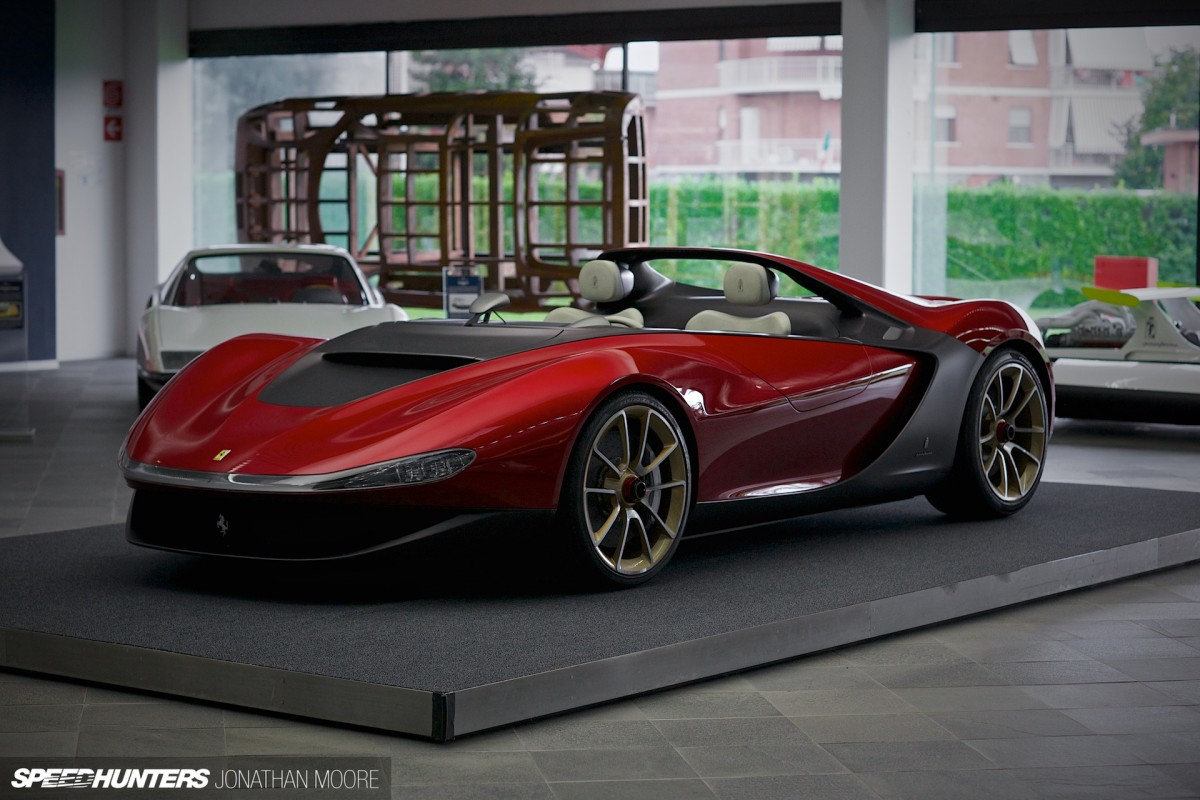
At last year’s Geneva Motor Show, there was one concept car that stood apart from the hypercar hyperbole. Simplicity in a sea of complexity. Where everyone else seemed to be adding winglets, fiddly details or top speed numbers – this one reduced height, minimized shut-lines, marginalized the windscreen – and definitely took away your breath. Less was indeed more. The car rotated slowly on its pedestal, one of the first to greet you as you came up the escalators into the main hall.
The glare of its headlights dimmed as the car turned and its grace became even more apparent. The arrow-like, chiselled nose with its wide maw gave way to flowing lines that arced and flowed down its length. Squat and aggressive but lithe and beautiful. Primal and yet organic. There was part of me that could have happily turned round and left, satisfied at seeing just this one car.
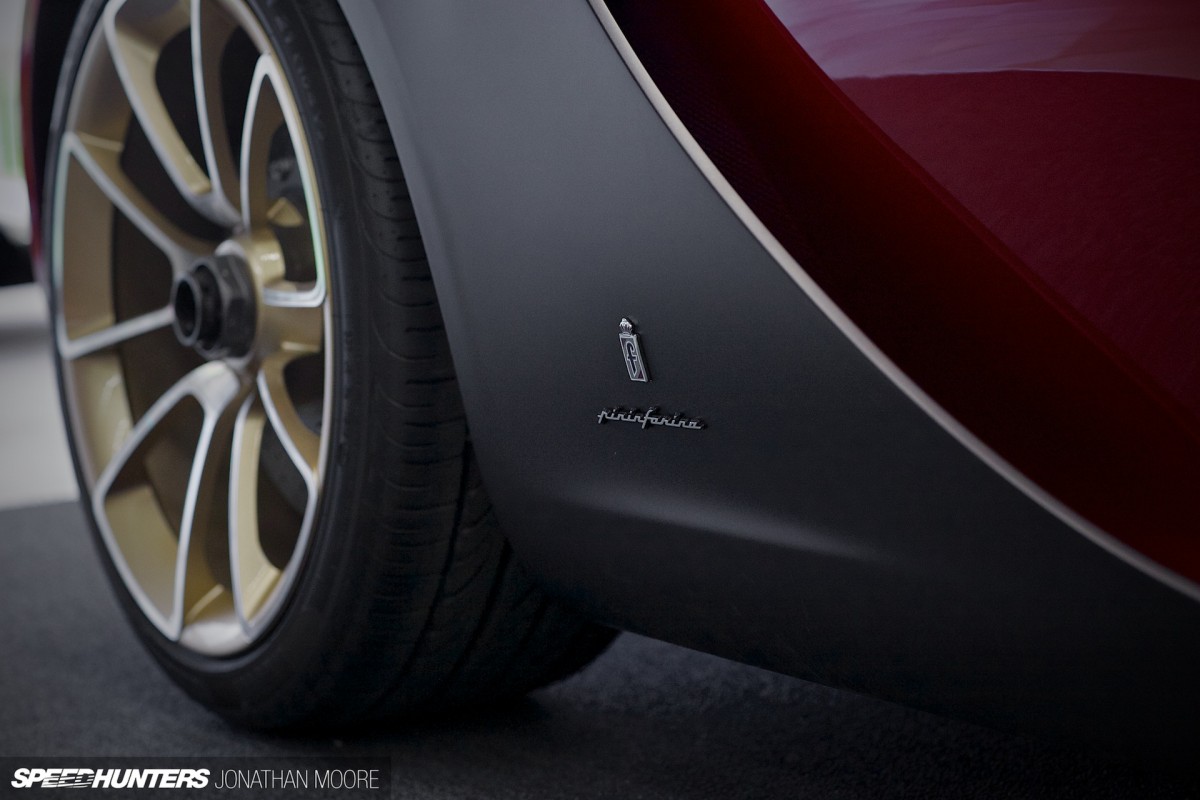
Of course, it was designed by an Italian carrozzeria; that was virtually a given. This was the Pininfarina Sergio – a car charged with as much emotion as passion by a company famed for creating beautiful cars, the positive reaction to the terribly sad passing of the company’s lynchpin leader, Sergio Pininfarina.
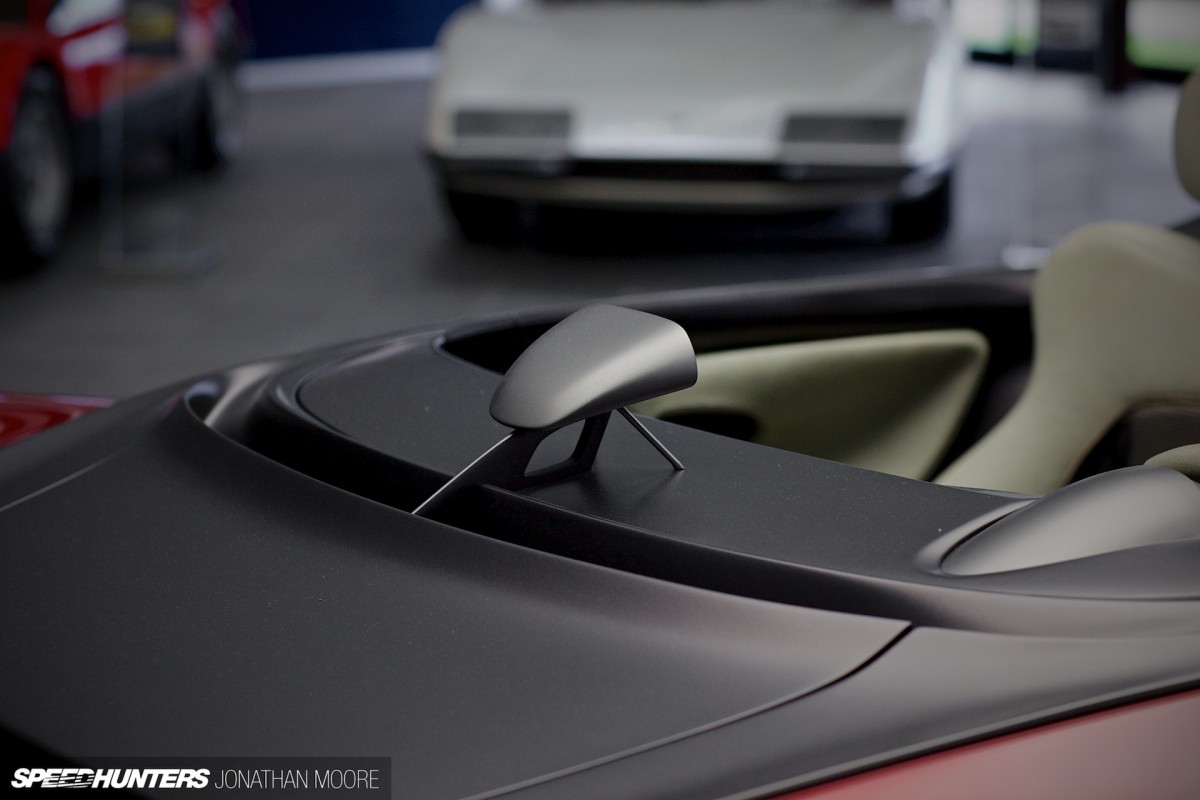
Unlike a lot of concept cars, the Sergio was very much designed with real-world performance in mind. Timescales involved in getting the car ready in time for Geneva precluded a fully functioning vehicle, but the work that went into the car was far more than skin deep. The body might have oozed classic shaping, but the styling was deliberate and refined, with every surface adding the aerodynamic performance without impacting on the car’s clean lines. Even the rear-view mirror was specifically modelled to be part of the system deflecting air from the driver and passenger.

No windscreen? Well, the Sergio’s body was designed to channel air away from the occupants, giving the driver and passenger an almost single-seater experience while making sure the buffeting wasn’t an issue. Bespoke helmets come with the car, stored in custom recesses by the doors. This was a car that had to be driven to be properly experienced, but would it ever go into production?
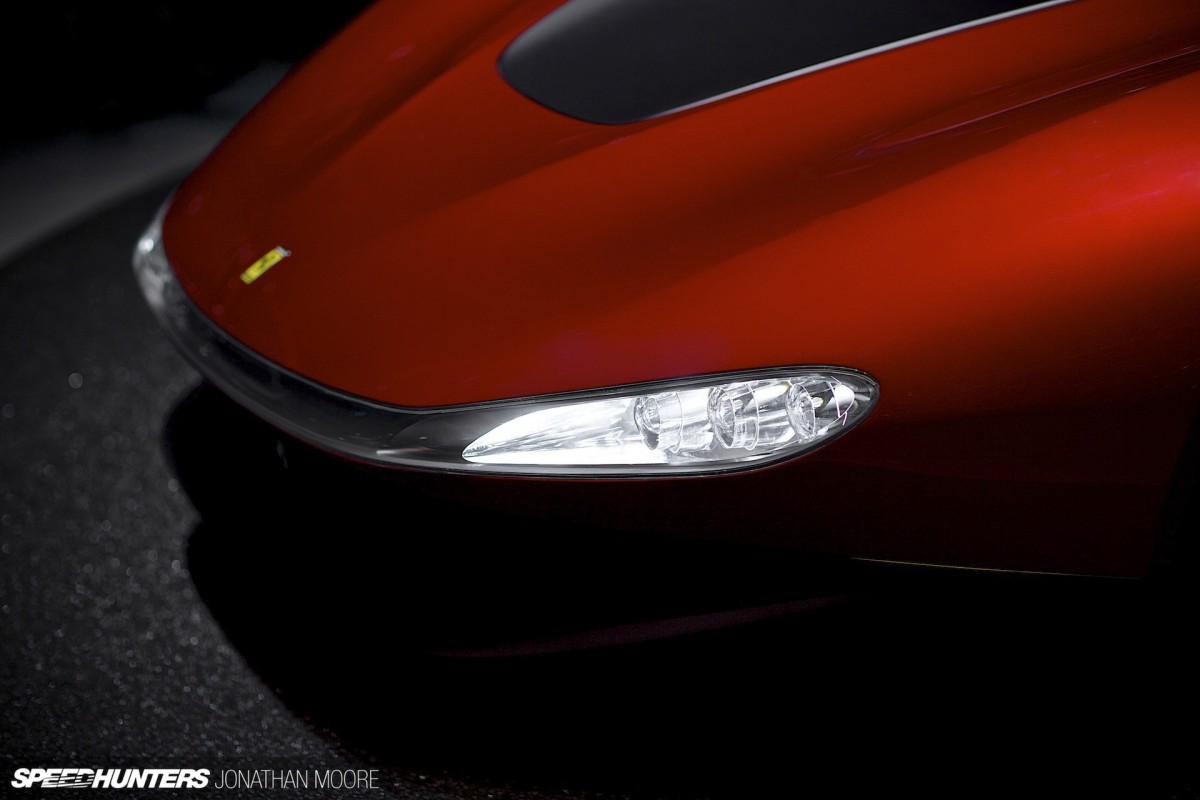
Pininfarina have been creating automotive sculpture for well over 80 years. As well as their renowned work for auto manufactures both mainstream and niche (from Peugeot to Mitsubishi; my Alfa Romeo GTV Cup proudly sports a Pininfarina badge; and the company have been interwoven into Ferrari’s DNA for many decades) they have also created amazing concepts over the decades. I’ll be taking you round Pininfarina’s private museum in a future story, but here I wanted to concentrate on the gestation of the Sergio, an archetypal Italian car from this most proudly Italian of companies.
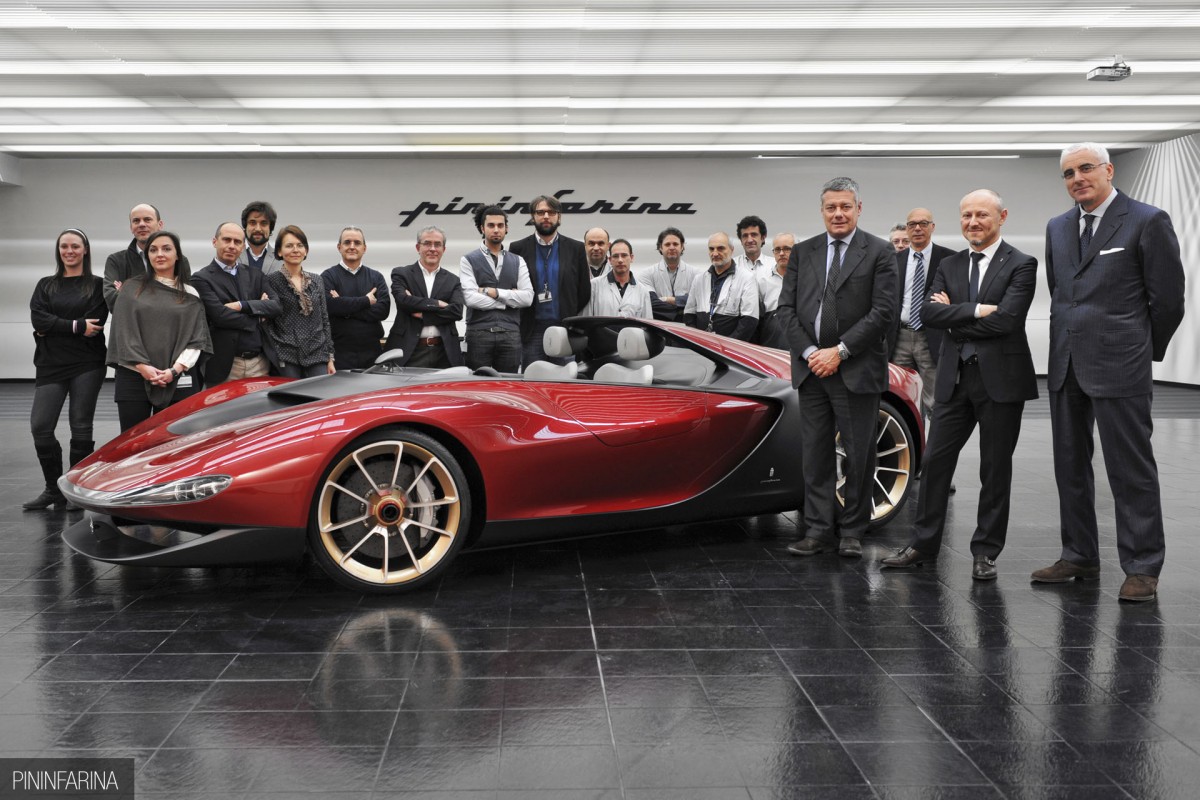
The Sergio project was headed up by Design Director Fabio Filippini (second right in the image), who joined Pininfarina in 2011, and naturally enveloped the whole company. I caught up with Luca Borgogno, Pininfarina’s Lead Designer, on our recent Speedhunting trip to Turin (in the centre of this shot, between the N and F of Pininfarina), where we had the chance to talk about the origin of the Sergio and how Pininfarina approached such an emotional project. Luca’s passion for car design is clear, in that he also is a visiting professor at IED, where he qualified, and has overseen many of the Masters show cars shown at Geneva.
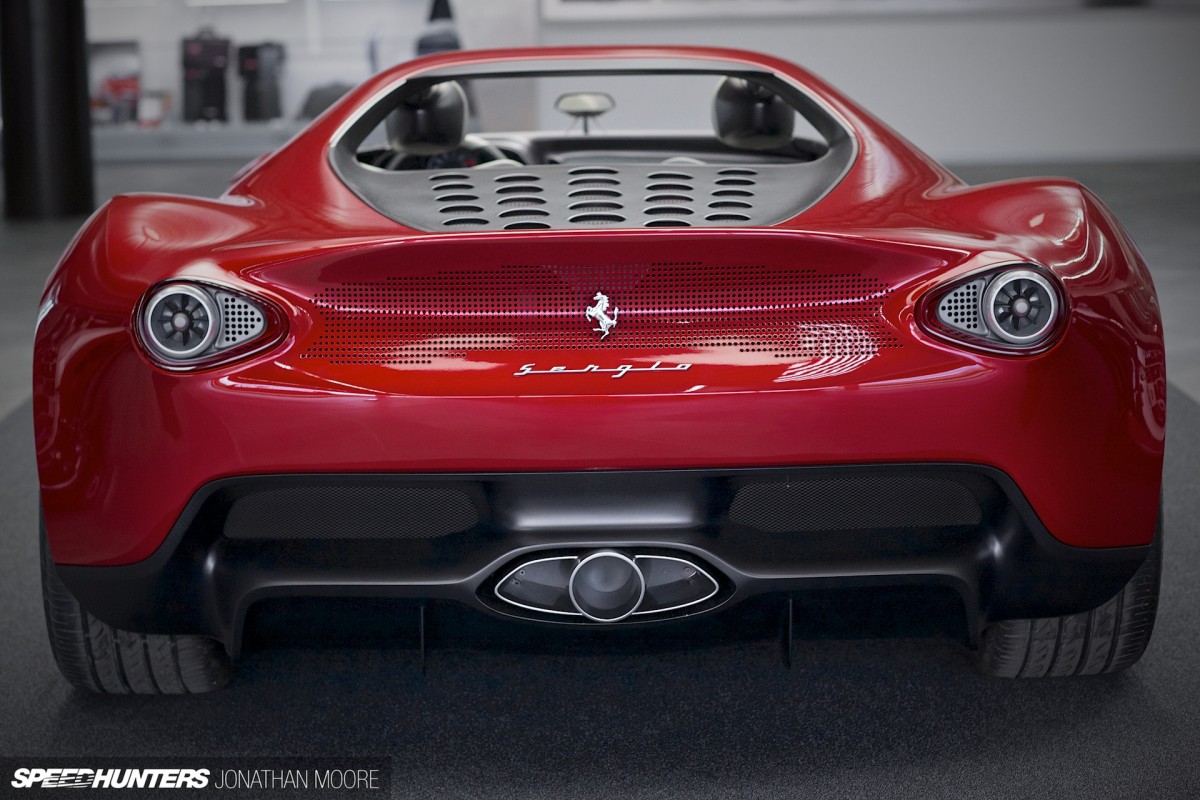
Jonathan: The project originated from the sad passing of your long time chairman, and was created to celebrate his legacy. Sergio headed up the company for over 50 years after taking up the reins from his father Battista, and Pininfarina had been through a difficult period, with the death of his son Andrea in 2006, as well as the tough economic climate. It means that the car surely carries a lot more emotional weight than a lot of other design projects you have undertaken for clients. How was the decision taken to create the Sergio, and to create it in-house without a specific commission? Was there an existing plan for a new concept, or was the Sergio started from scratch?
Luca: We actually decided to do it in September 2012 and it was to be absolutely dedicated to Sergio right from the beginning. It was not picked up from a project that we’d started before. We took a bit of time after his death, we had to digest it a little bit, but we decided to create this homage to him.
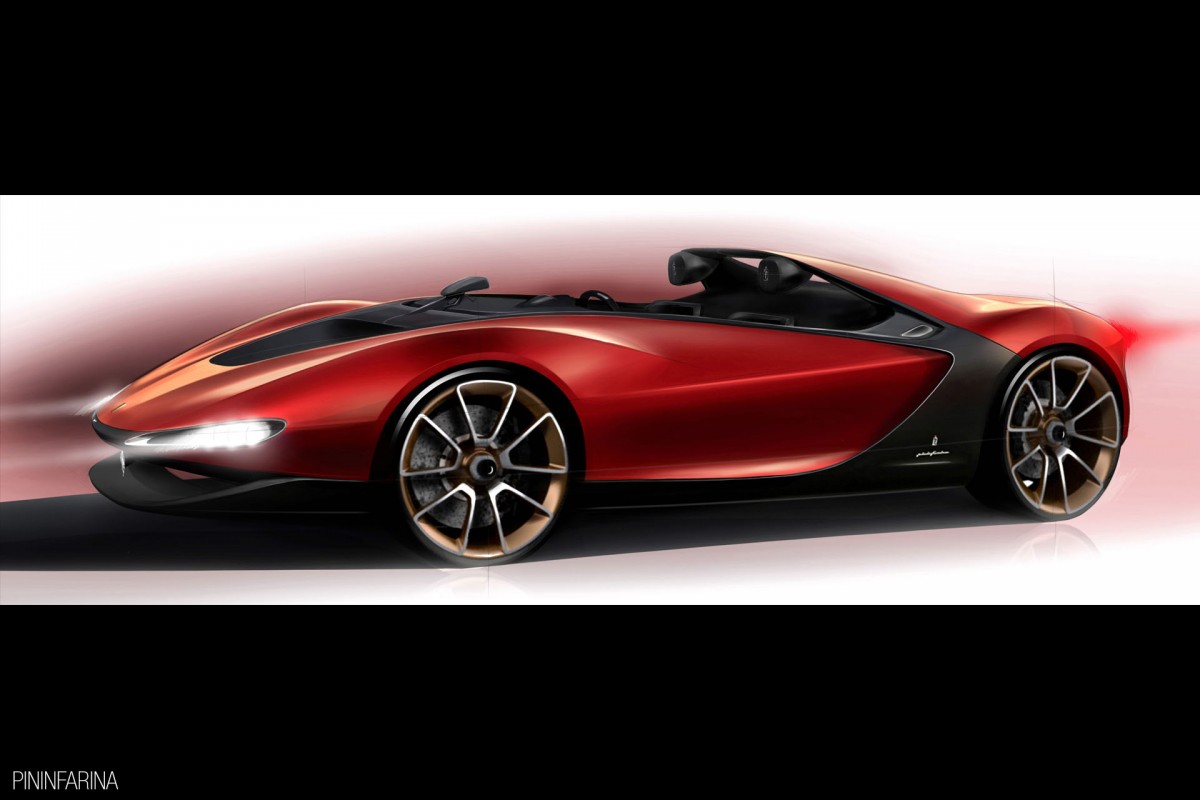
Jonathan: Was there any difference in approach to this project? How do you go through initiating a full car design project like this, and how many of the design team were involved?
Luca: At the beginning of the project all of the design team was involved, so there were proposals from 10 or 12 designers to choose from. Of course, everyone was very happy to be involved and we had a huge amount of sketches and different options. But it was one of those rare times that the design was chosen straight away from one sketch. It doesn’t happen a lot; usually we can take a little bit from one idea, the front of another concept, the rear of another, but everyone was really convinced from the beginning that this sketch was the good one.
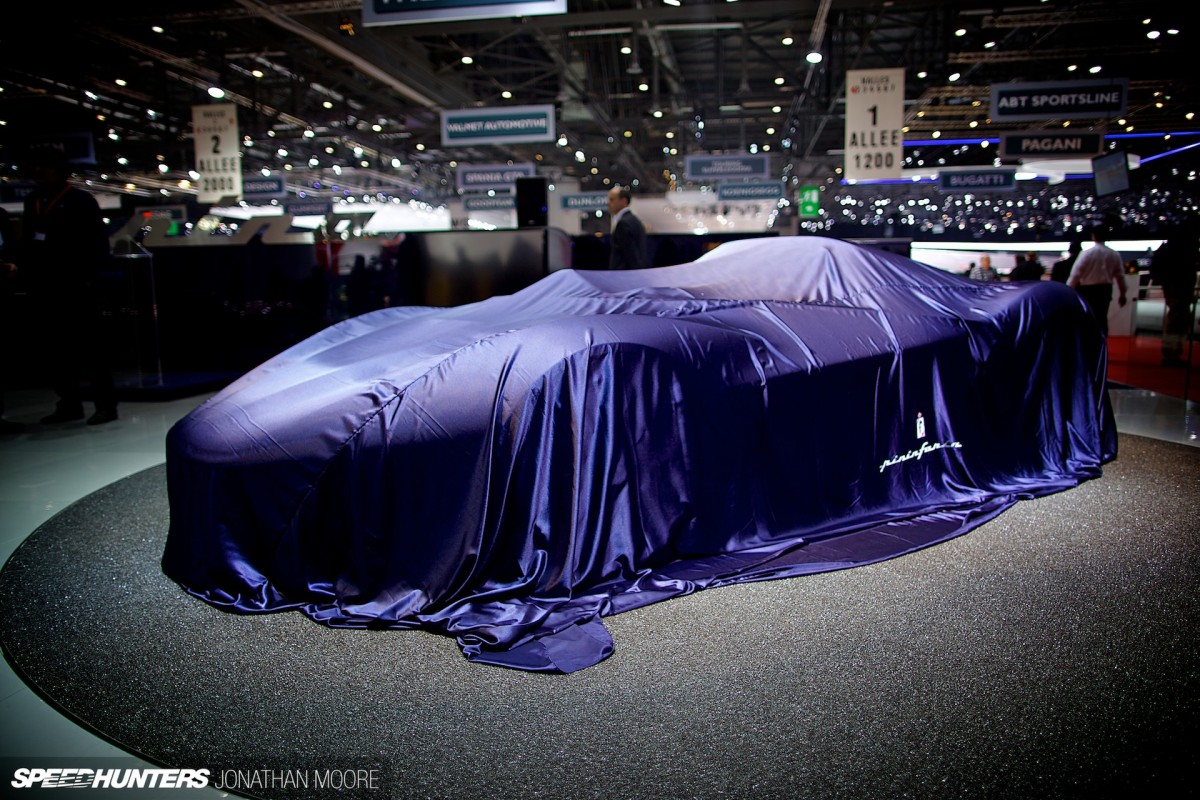
Jonathan: Was the Geneva show always the target for its unveiling, or were the deadlines self-imposed – just trying to get the car completed rapidly in tribute to Sergio?
Luca: We always thought Geneva would be the perfect place to present it, as we have a tradition of unveiling our cars there. It would also mean the perfect visibility for such an important project.
CHAPTER TWO
Organic Shaping With Digital Origins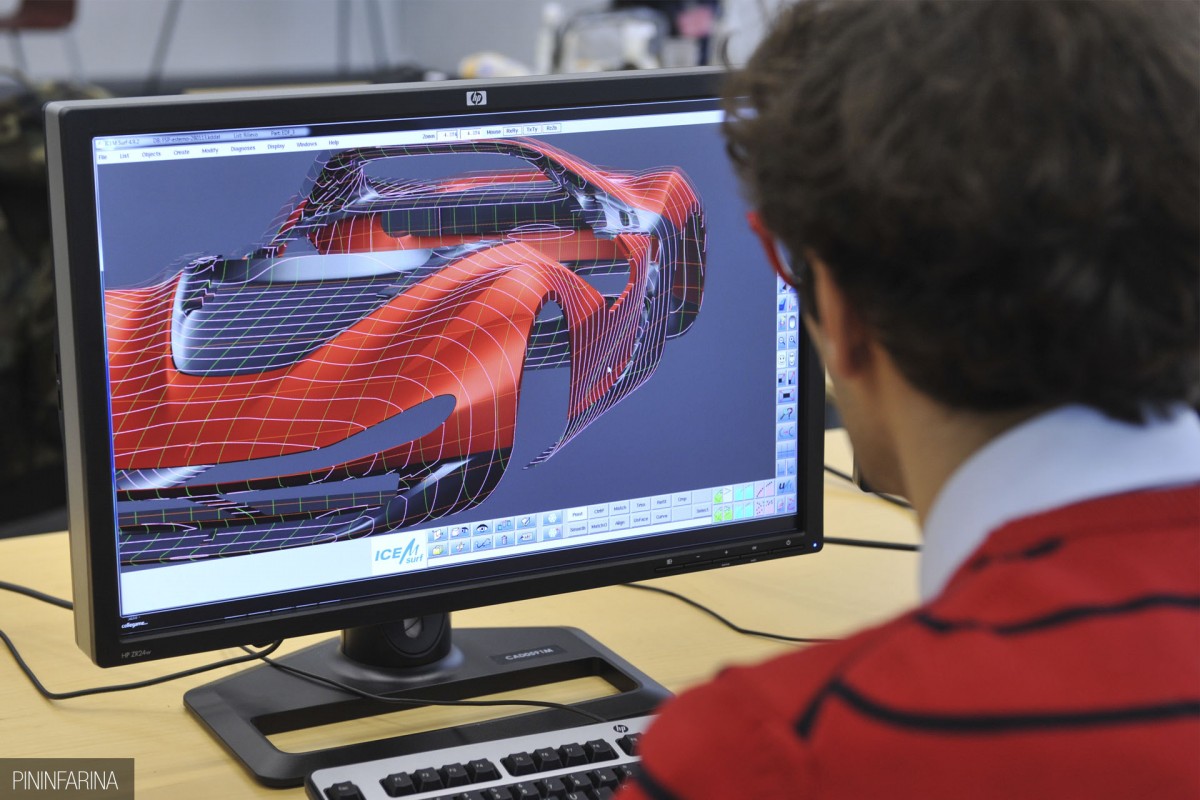
Jonathan: What was the rough timescale for the creation of the car, from initial sketches to completed concept? What was the balance between sketching, model making and computer design?
Luca: We only had four months really. After we chose the sketch, we had two designers and two digital modellers working on the Sergio. We then did two different 3D proposals based on the sketch, in a very quick time, just one week. We selected one, and worked up that design in 3D from then on, right up until we started machining the full-scale real car.
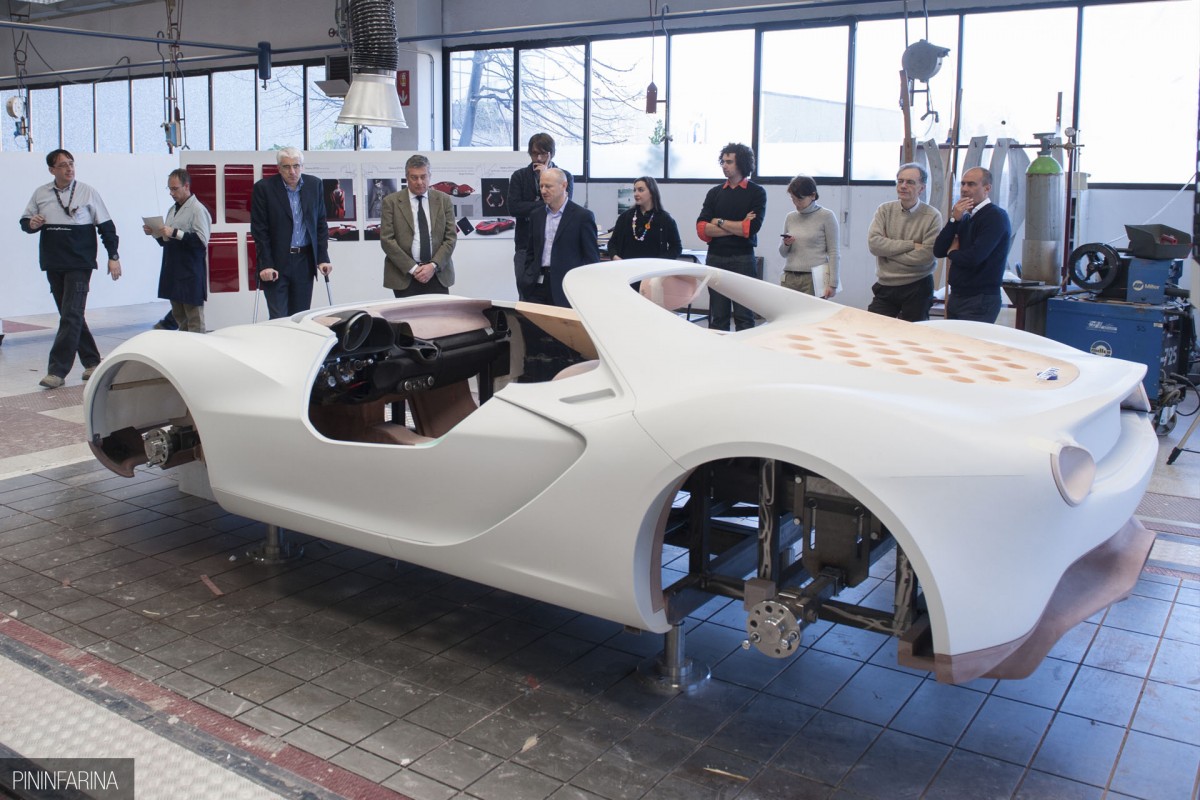
Luca: The difference between that and usual is that we only machined one polystyrene model before the final car. There was no clay, no long modelling phase; it was almost a completely digital process.
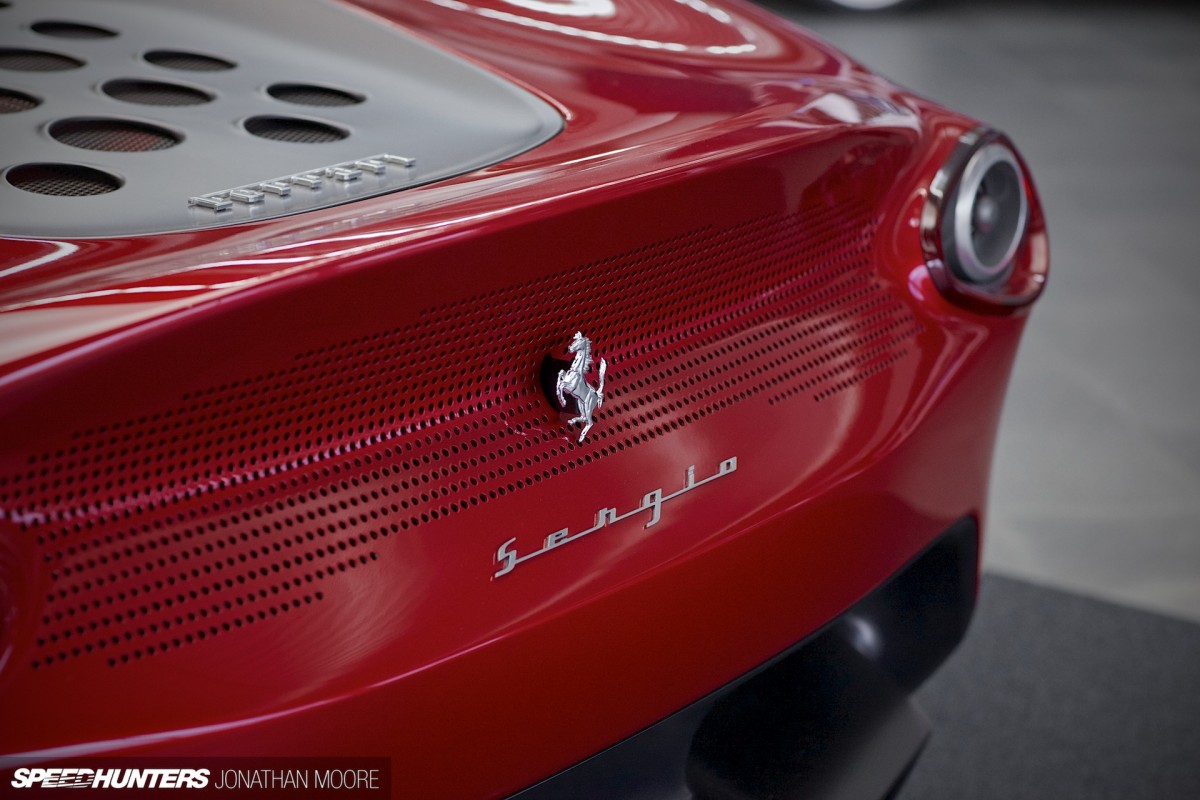
Jonathan: Sergio the man helped forge the strong – almost inextricable – links between Ferrari and Pininfarina, and his strength of personality and passion for design were legendary. I suppose the underpinnings of this car couldn’t have been anything else but a Ferrari. Once the 458 was chosen as a platform, what limits did that place on the design, if any?
Luca: The 458 was chosen straight away. We believe the 458 is almost a perfect car, proportion-wise, it’s just fantastic. Mid-engine with the V8, it’s very compact, but also very aggressive and sporty as well. We all agreed that it was the ideal car to use as the base. There was no doubt about that!
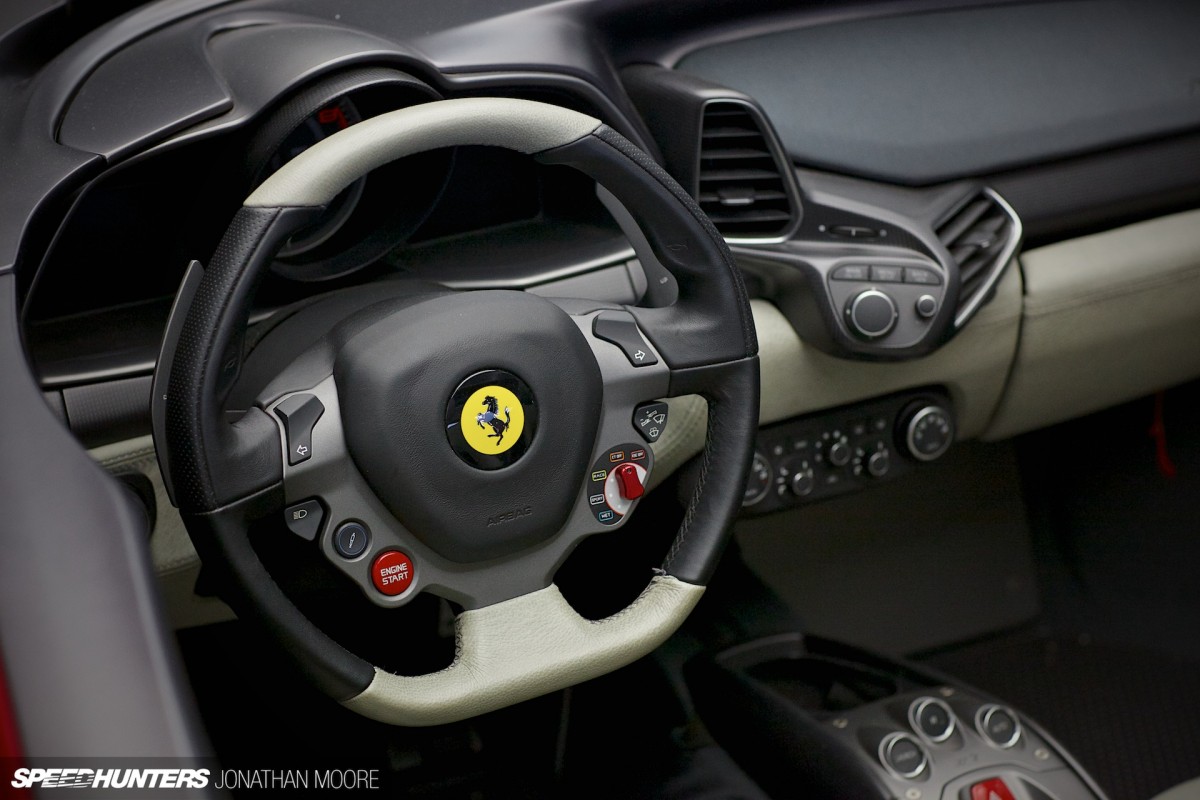
Jonathan: How much involvement did Ferrari have in the project?
Luca: The concept car was very much developed at Pininfarina, but [Ferrari chairman] Luca di Montezemelo and a small group of people at Ferrari were aware that we were doing the car. Luca saw it a couple of times during development to give us a kind of approval of the brief, but they left us very free to follow our own path, which was very important.
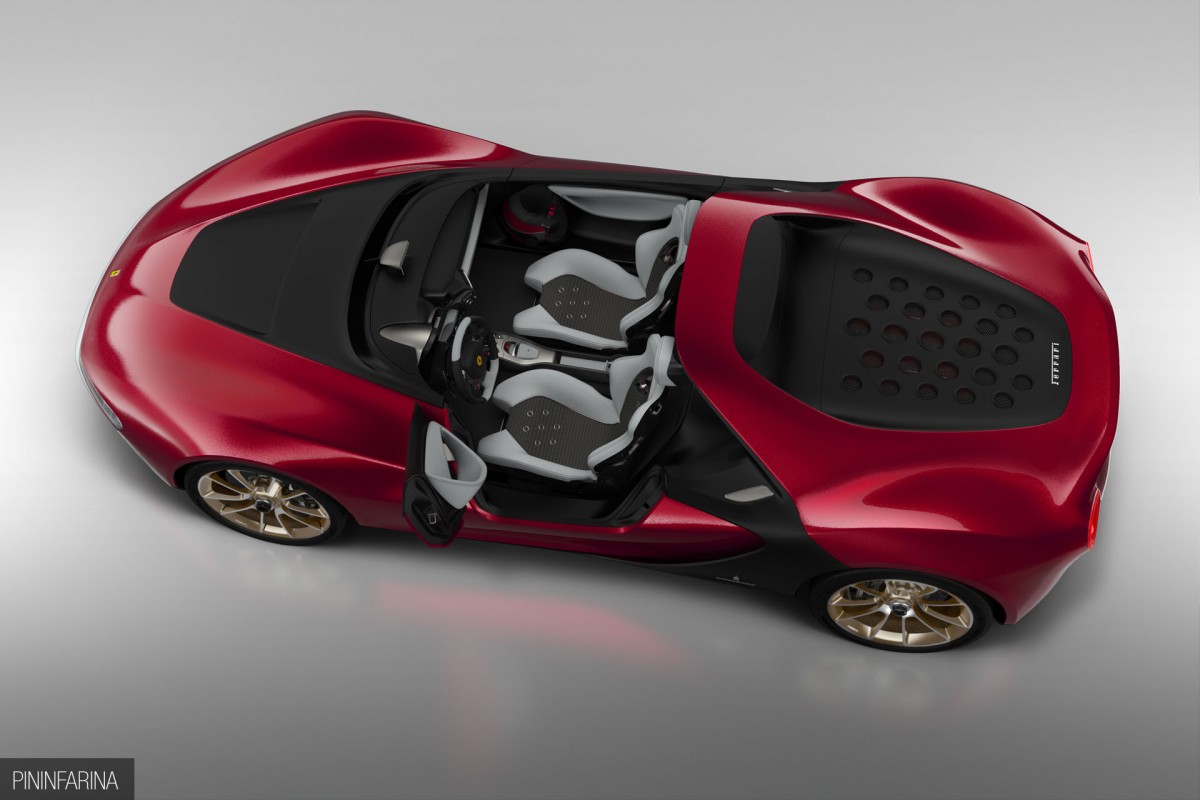
Jonathan: Were there any design constraints, or was the process in a way much more free than a typical project?
Luca: Sometimes when project times are so short the results come up even better! There is no possibility for different meetings with lots of people to introuduce doubts, things that can interfere with the concept itself, so it was really straightforward. From that initial sketch we knew we had to do this or that, and we just got on with it. I think this doesn’t happen a lot of times.

Luca: For any other production car or something like this there can be a lot of reflection during the design process. We might change the front or whatever, but for the Sergio nothing was like this, we just did it like it was in the sketch. I think this was a positive thing in the end, to deal with such a short deadline. It also helped that we were the client: we had a very clear idea of what we wanted to do. Working on this self-developed project helped us get straight to the point.
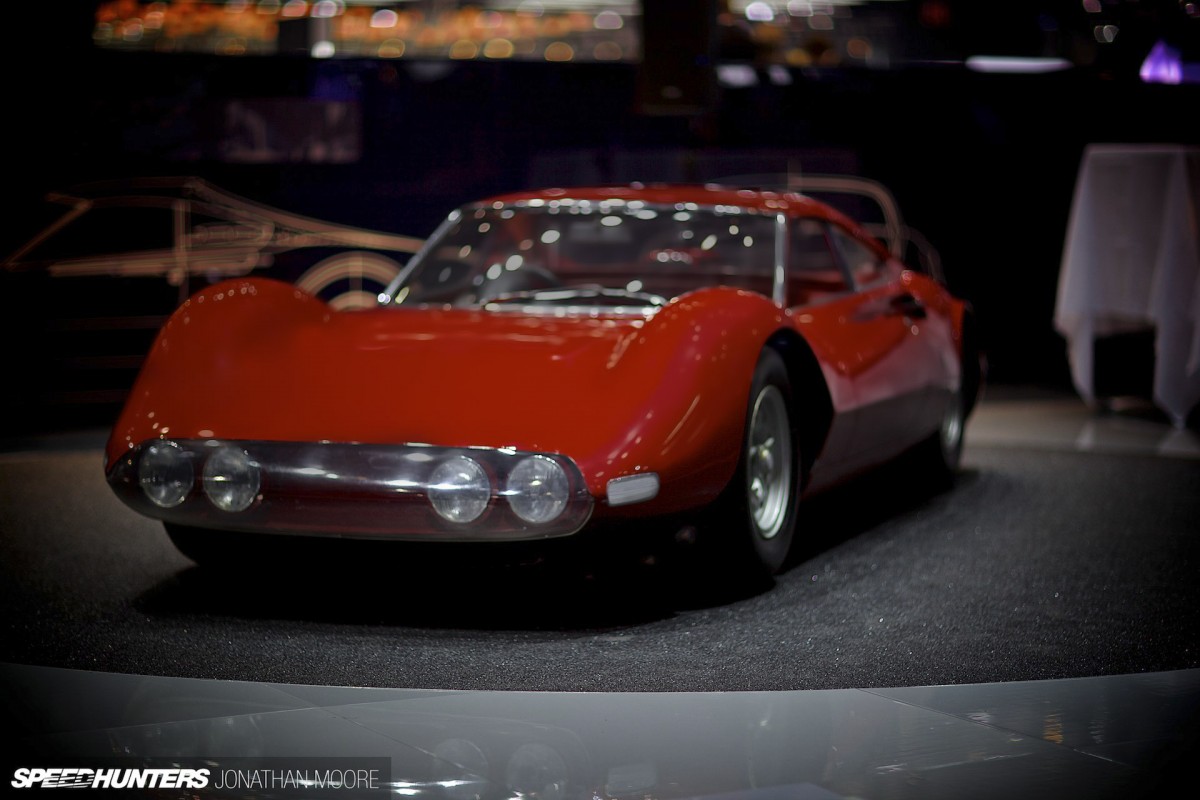
Jonathan: There seemed to be a clear decision to link the Sergio’s DNA to the Dino Berlinetta Speciale, the last car that Sergio worked on with his father Battista, Pininfarina’s founder, back in 1965. Was that car’s styling always in mind during the process, or was it more a spiritual influence?
Luca: We all agreed that the Speciale was a perfect example of a very sexy car; this was something that we really wanted to incorporate into the Sergio. Sometimes production cars of today become a little too aggressive and technological with wings and that kind of thing.
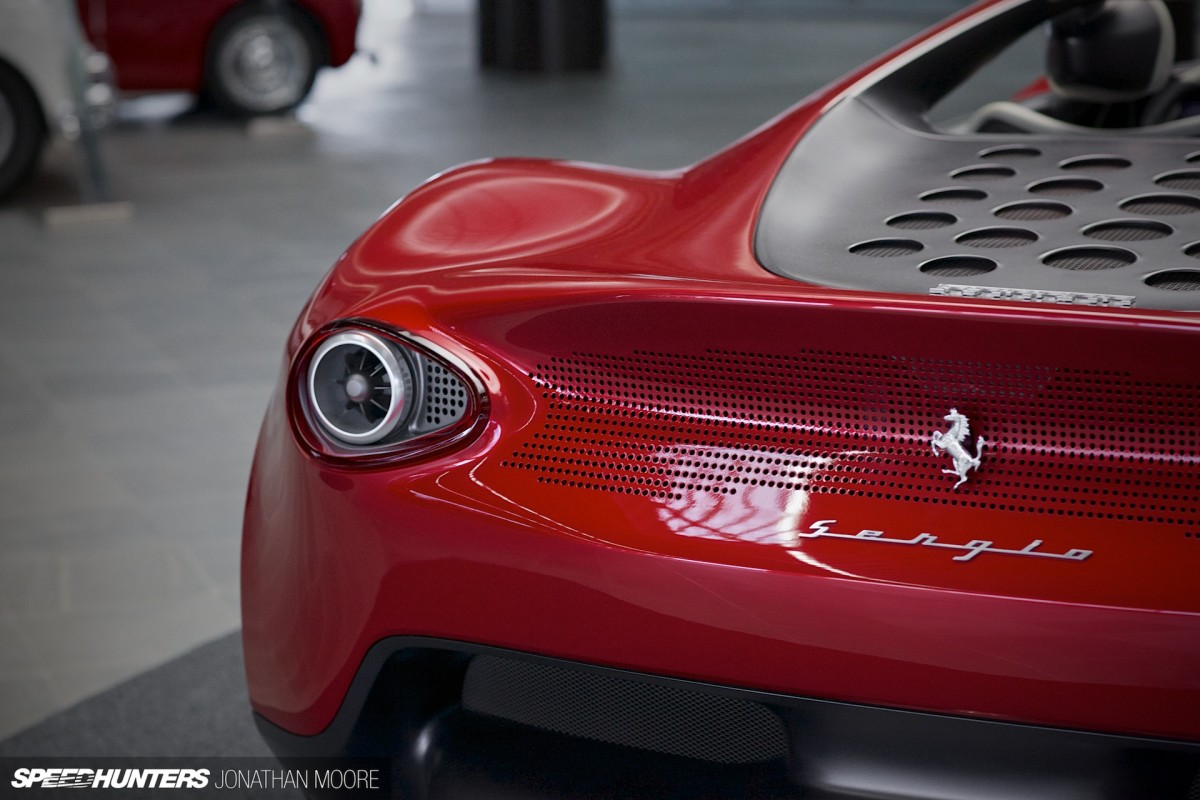
Luca: We wanted this car to be particularly clean and sexy, to retain purity. In that direction the Dino was exactly like that; very sensual flares in the front and so on. All of these concepts we wanted to develop into the Sergio.
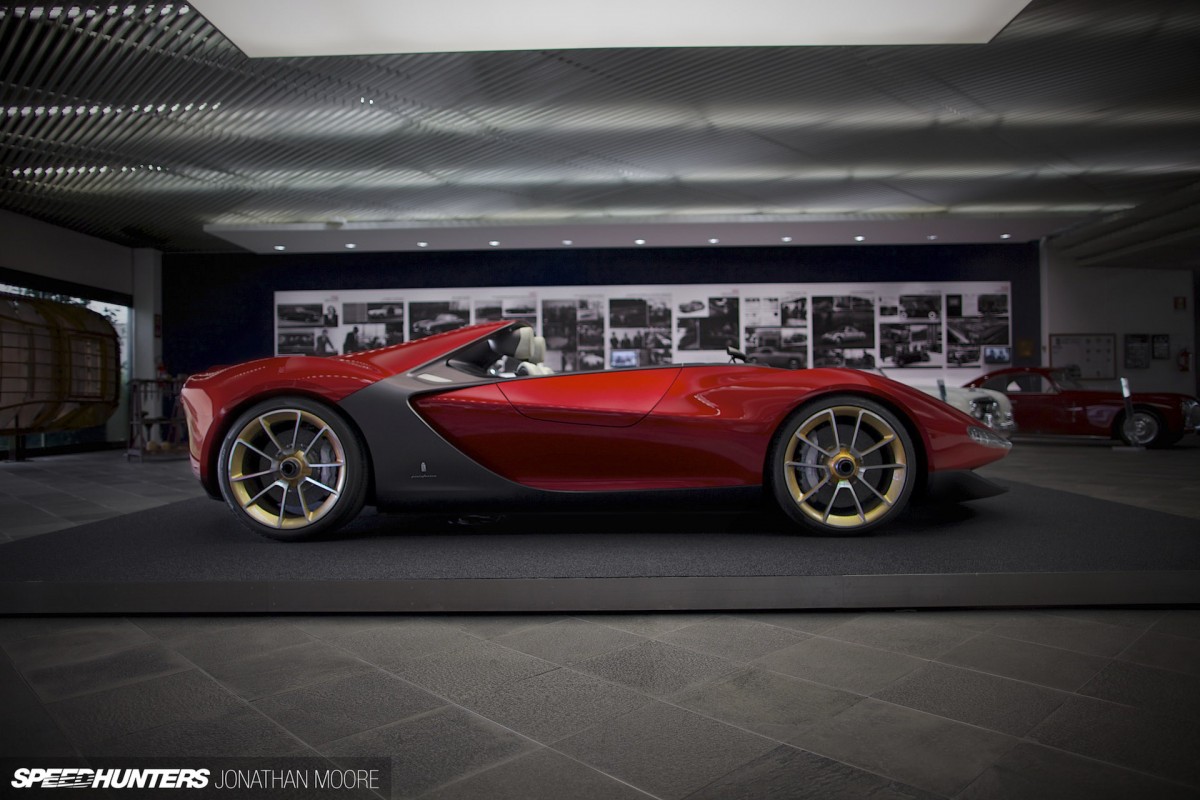
Jonathan: The Sergio is undeniably modern and aggressive in appearance, with a clearly defined waist line, but also has very classic, sculptural qualities that hark back to classic cars. What could typically be a sharp line nowadays is subtly rounded off to create a more fluid shape. The side profile is very organic and looks like it could be sketched with a single stroke of a pen. The only straight line I can see is the one that defines the rising slash of the roll-over protection and suspended headrests: that’s a unique feature that I haven’t seen before.
Luca: I think the main goal from the initial sketch was to clearly differentiate between what was technical and what was sensual. So all the red parts were to feel sensual and make you appreciate the shape of the car, whereas the black parts needed, in my opinion, to be much more technical to make a real contrast. That’s why it came out exactly like this.
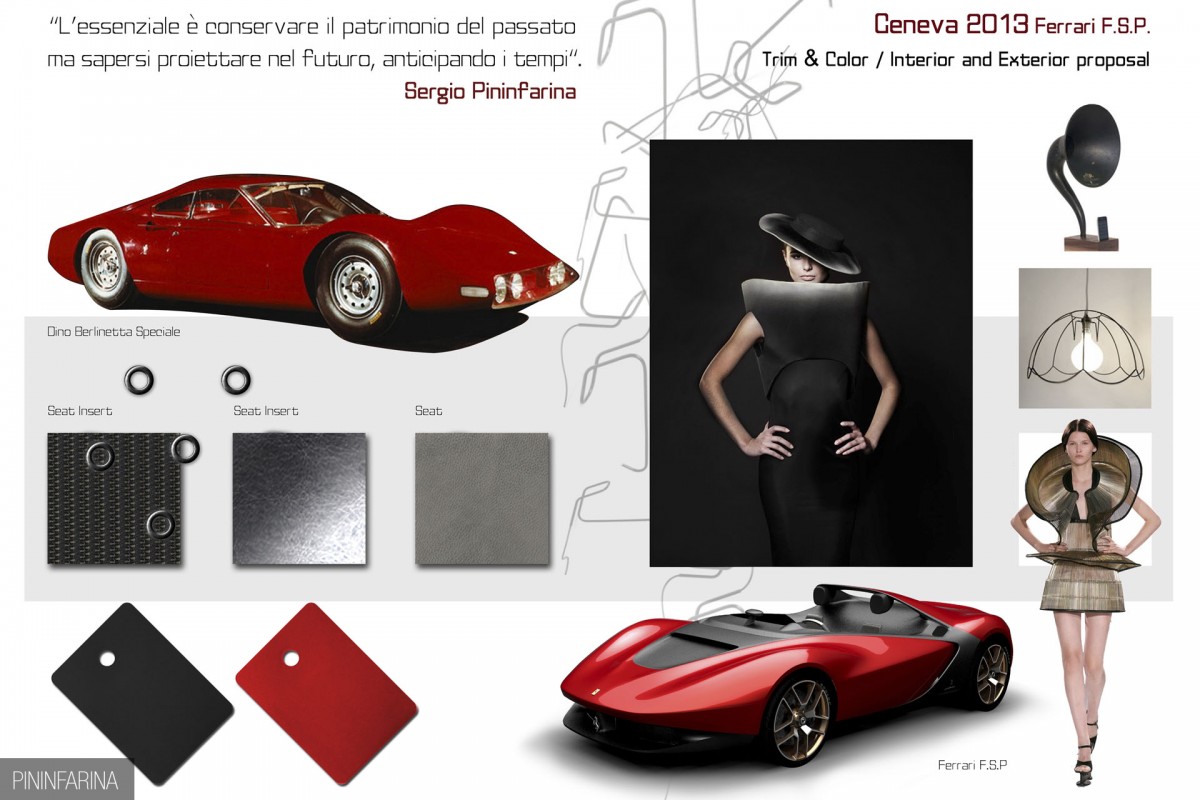
Luca: The straight line that goes from the headrests to the wheel was to visually divide in a very strong way that contrast between surfaces. That contrast makes the design of the car in my opinion. Also, in the front of the car, where the intake removes the flow from the helmets of the occupants, it’s exactly the same. All the red parts, you don’t see any holes or shut lines, nothing that ruins the sexiness of the car. All the functional parts of the car were finished in black. That was the design rule with this car.
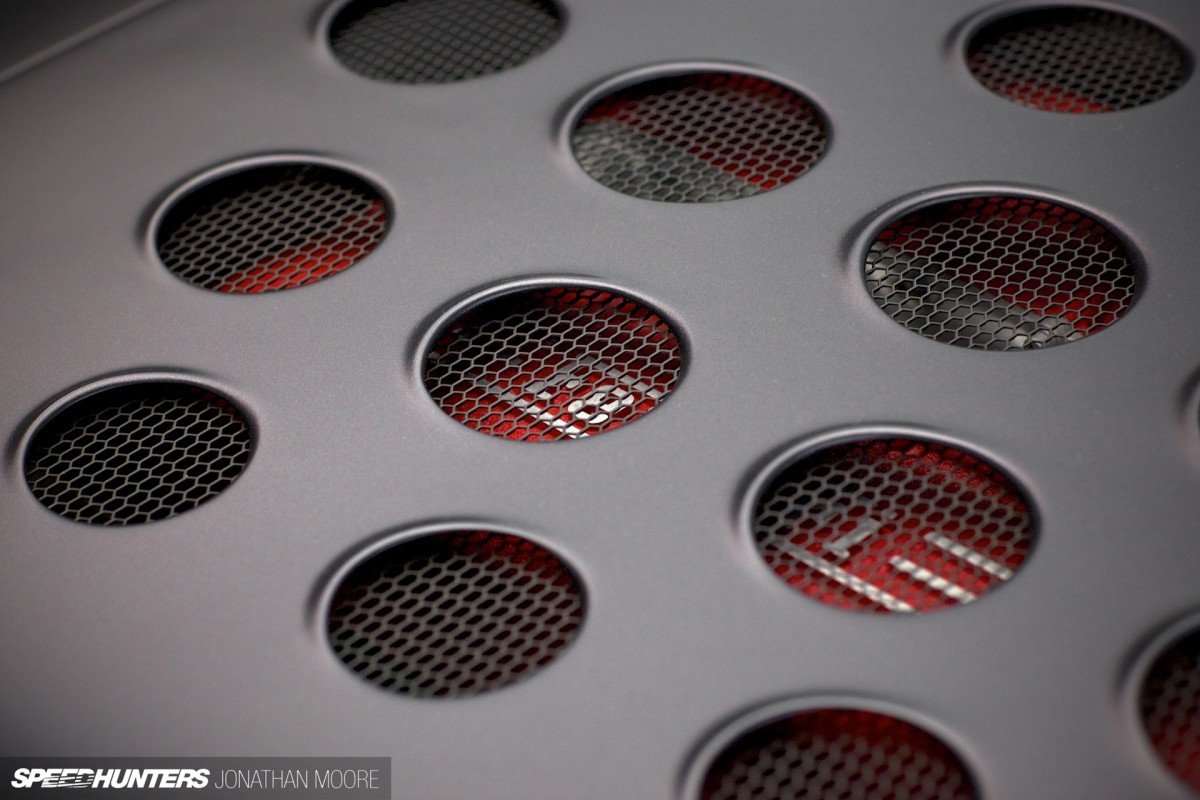
Luca: The body is carbon, but painted in a very dark grey that looks almost like a matte black, to further emphasise the contrast I’ve mentioned. We didn’t want pure carbon, as this car needed to be more elegant compared to some of the more extreme track cars that are being produced. From the very beginning we didn’t want to show any raw carbon.
FINAL CHAPTER
Performance, Perfection… & Production?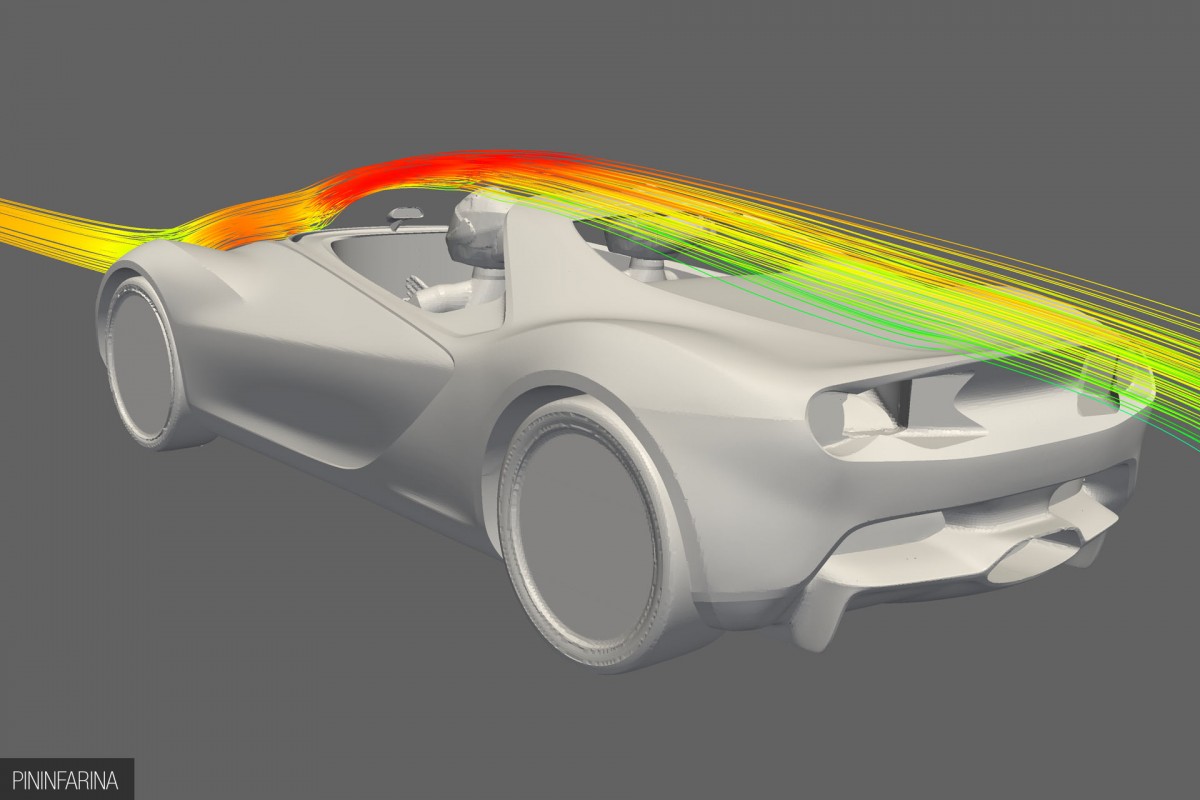
Jonathan: Pininfarina operated Italy’s first full-scale wind tunnel back in the early ’70s, so the company has obviously always had a strong understanding of aerodynamics. The car is obviously very efficient, and designed for performance. How did you manage to retain such an organic shape and yet meet the aero goals, especially with that extreme open cockpit? So many cars now sprout unsightly wings or intakes.
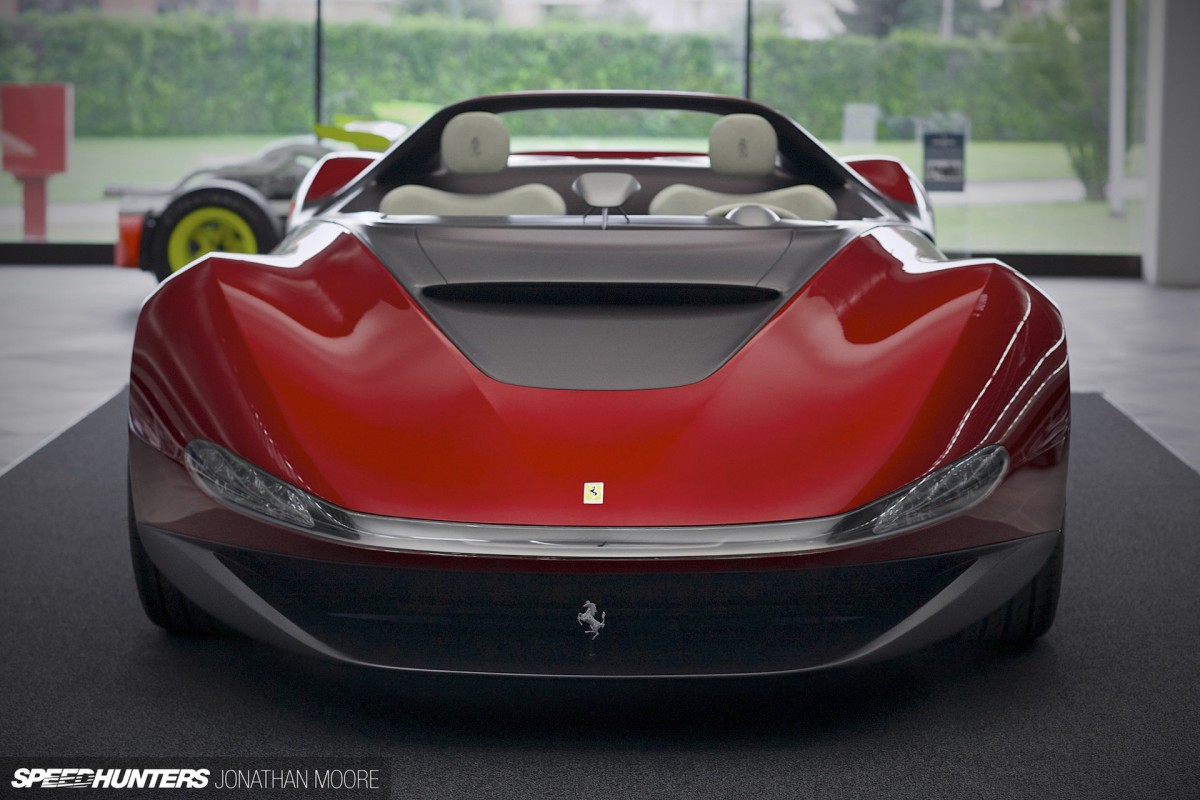
Luca: It was very important, because of that long tradition of performance that we have, but we focussed a lot on the visual concept of the car. It’s a barchetta, so we didn’t need to make it perform at 350km/h or whatever. The main goal was to remove air from the occupants, to make them feel comfortable, even without really having a windscreen. It was a very different approach to styling compared to a normal performance car.
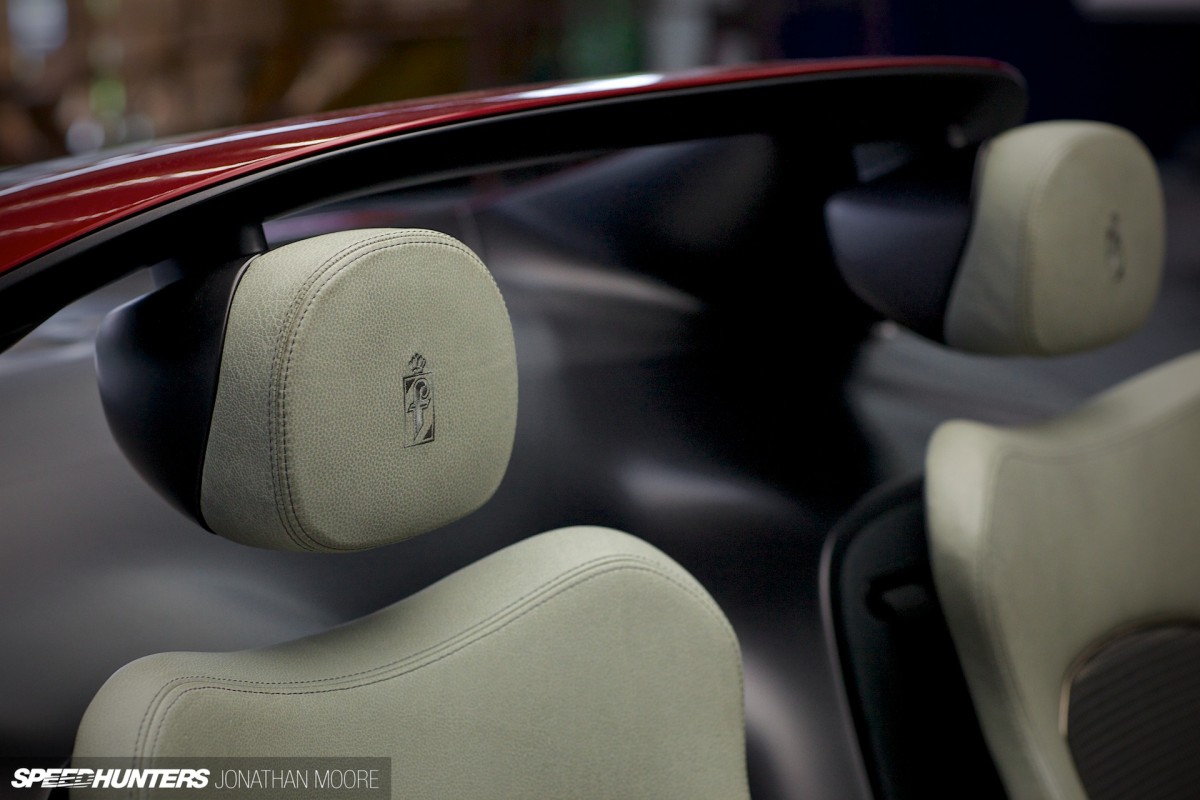
Luca: The underbody is very similar to the base 458, with the position of the rear diffuser and the general layout, so the aero performance of the underbody is like a 458. But we concentrated very much on the enjoyment of the driving more than the performance alone. The Sergio is about being able to really enjoy the car.
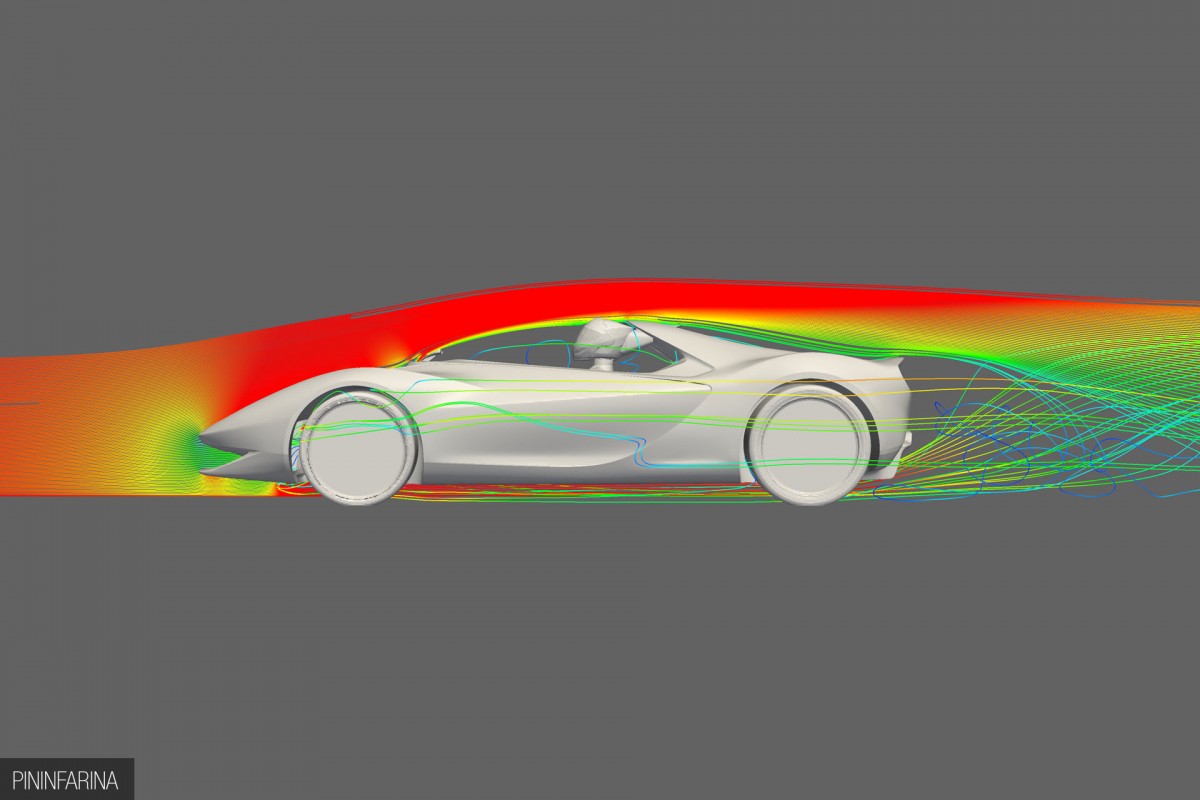
Luca: Ferrari are fantastic at doing the super high end performance car, and probably the best at doing that, but that’s not something that we specifically do at Pininfarina. We wanted to go in a direction that is a bit different from everyone else, to of course make it more uniquely Pininfarina.
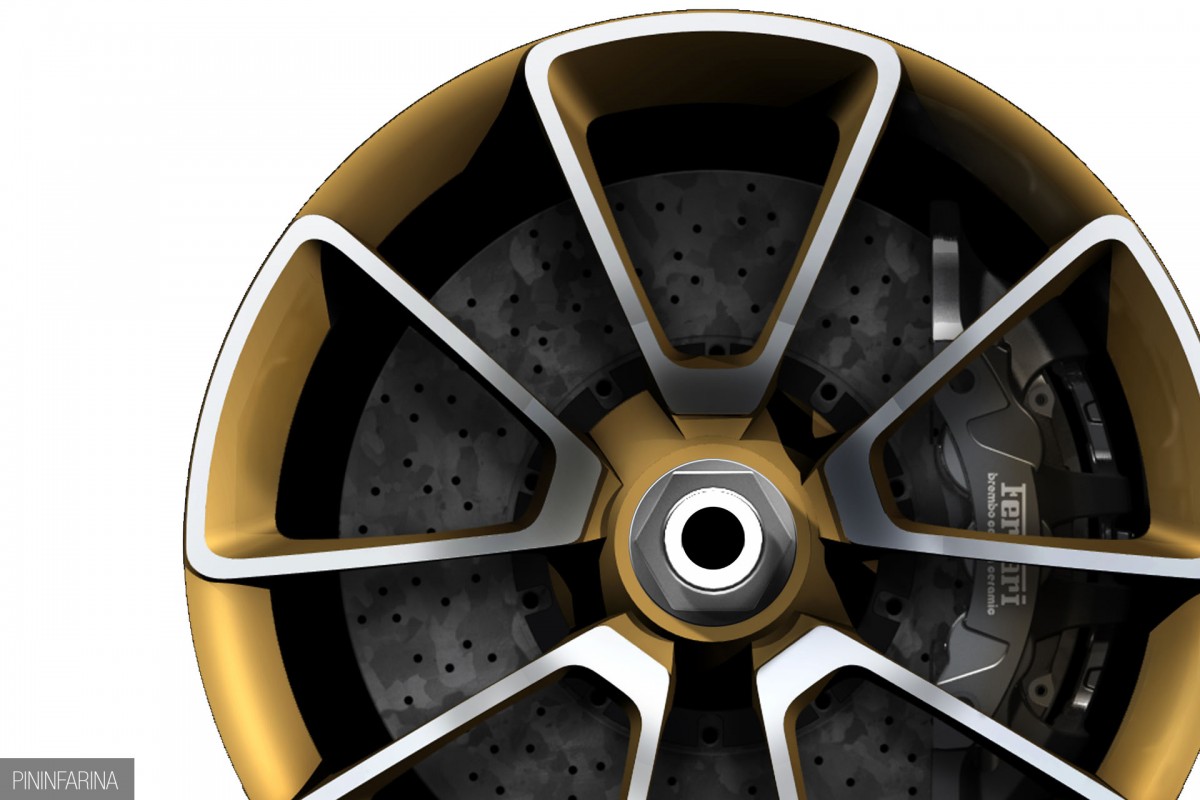
Jonathan: You’ve mentioned before that wheels can be a real sticking point with collaborative projects. What variants did you go through to get to the final design? To me they look like cut-out versions of racing wheels used on Ferrari’s Le Mans prototypes of the 1970s.
Luca: That was the goal, we really wanted to do something like that; again, to make a strong contrast between the sexiness of the body and the technicality of all these kind of details.
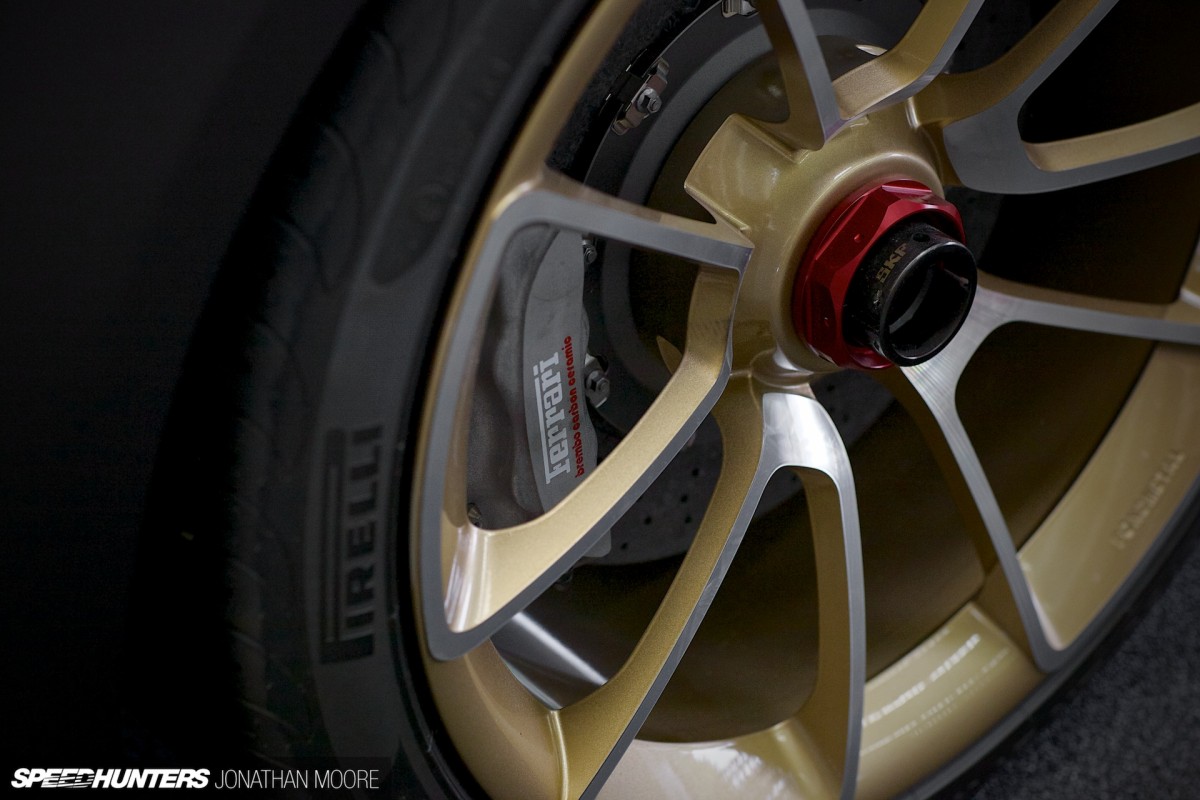
We didn’t want to play too much with complex surfaces with the wheels, they needed to be quite simple, quite dynamic. But you’re right, our inspiration was very much racing cars of the ‘70s with the magnesium look and gold colour. The wheels were completely bespoke; we use some suppliers to help with our one-off wheels, but they are completely designed and developed by us.
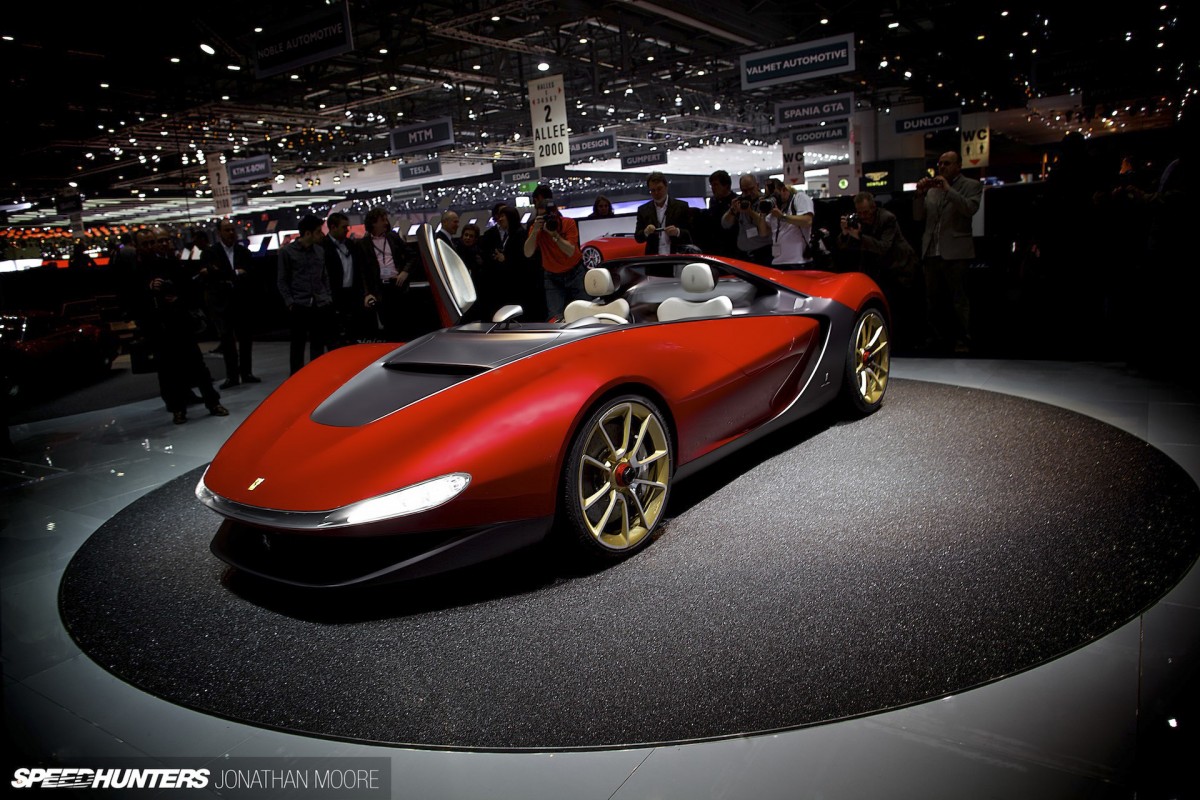
Jonathan: The Pininfarina Sergio concept was one of the highlights of the 2013 Geneva Auto Salon, impressing the crowds with its refinement and sophistication in the face of the hypercar frenzy at the other end of the hall. Were you pleased with the reaction to the car?
Luca: Absolutely, we were very happy. A lot of people said it was one of the best cars in the show, even though it was going in different direction to a lot of other show cars. We had a very positive reaction from a lot of car design websites and magazines, that it was like a breath of fresh air compared to the normal direction of car design right now, so we were very pleased.
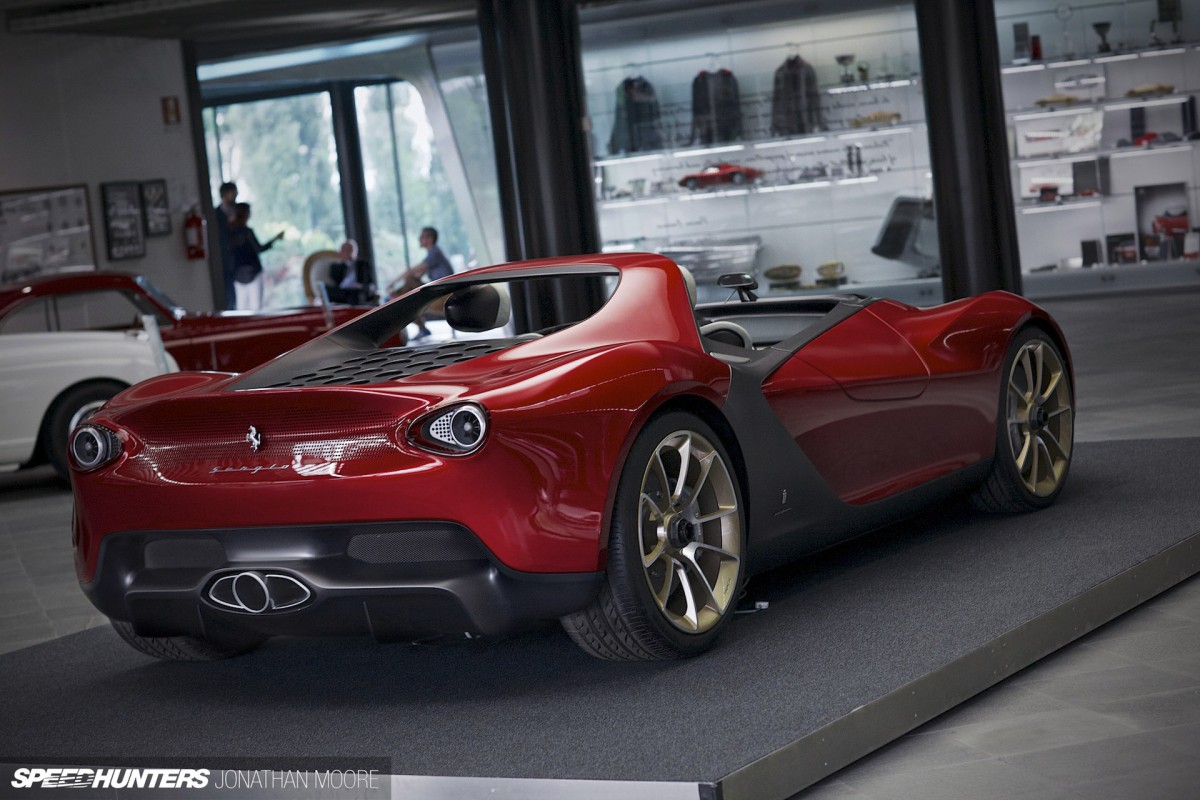
Jonathan: The Sergio seems to sit well in the pantheon of Pininfarina’s long and influential creative output: cutting edge and different, but very attractive.
Luca: Absolutely, the whole team are very proud of the project.
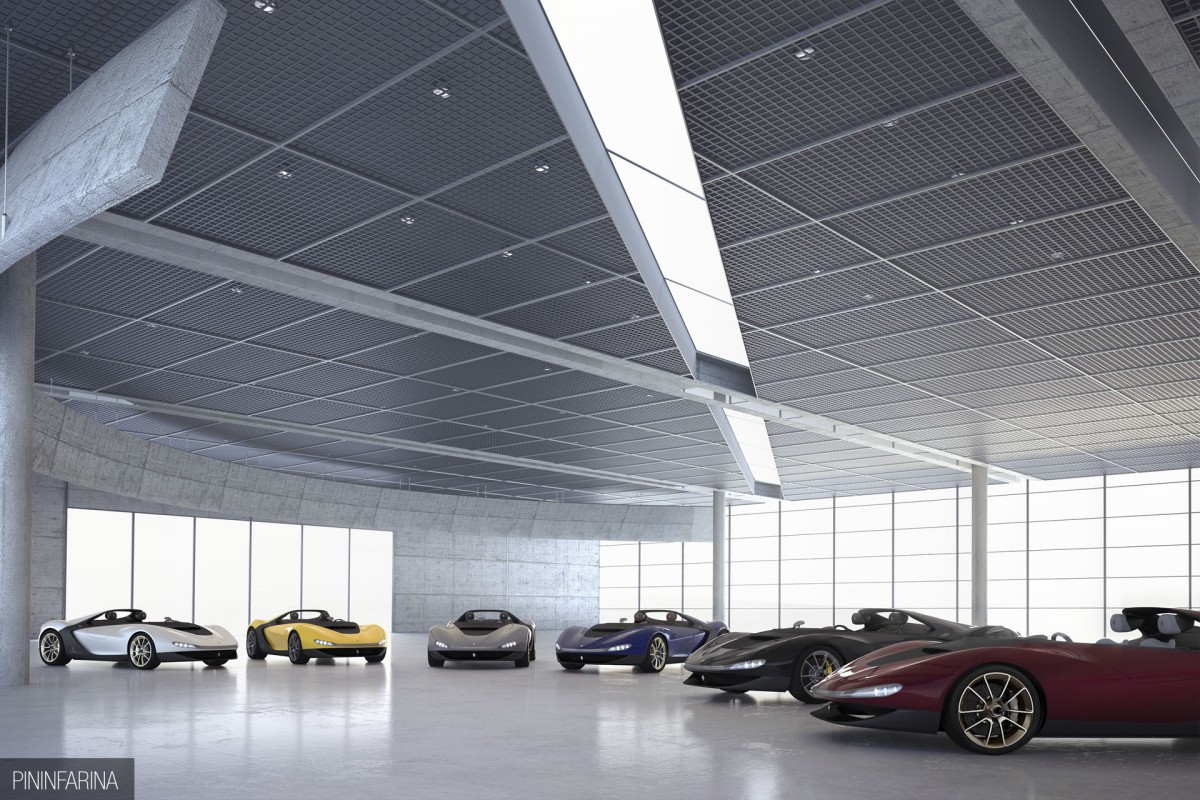
Jonathan: Production possibility for the Sergio was stressed: is that happening? What would need to be changed?
Luca: The Geneva car was purely a show car: it was not a running car, sadly, because we had such a short time available. It was impossible in the time available. (Luca then laughs) I can’t say anything about production unfortunately.
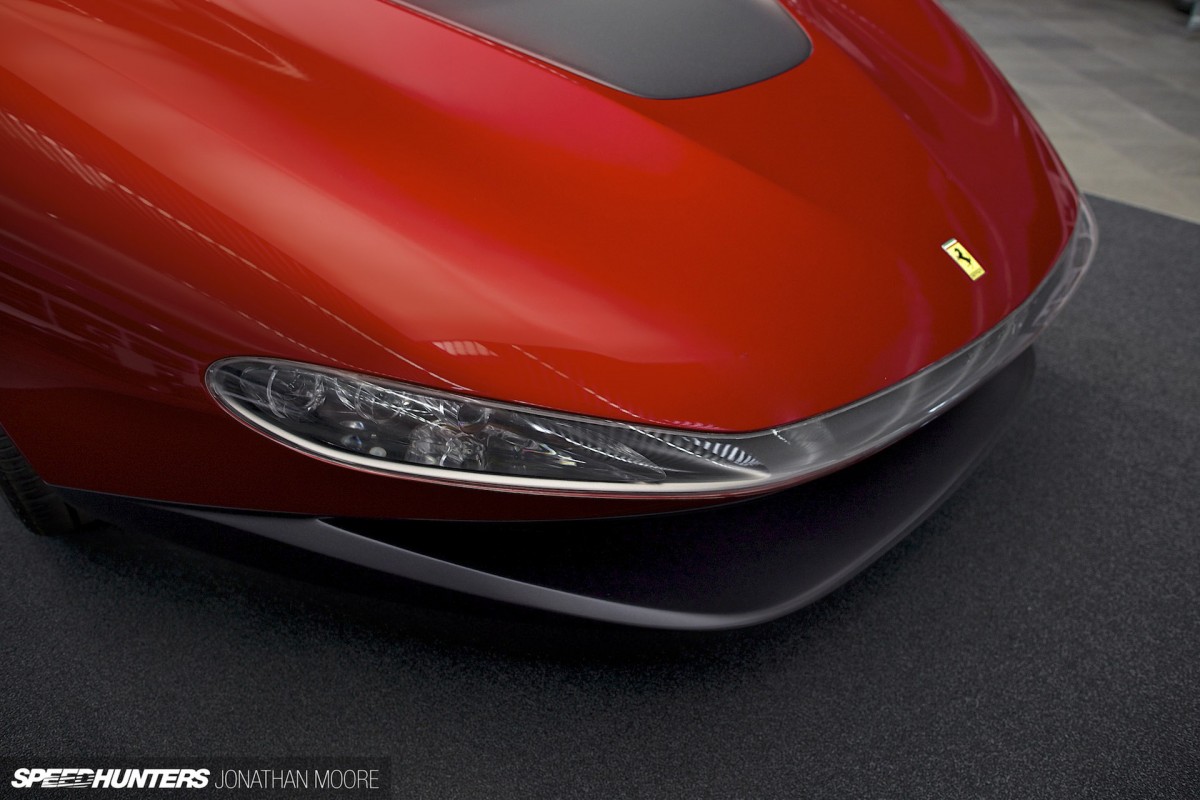
Jonathan: Obviously Pininfarina typically work on confidential projects, but what is the next major project you’re working on, if you can tell us?
Luca: (Luca laughs again!) There are lots of things I’ve love to talk about: I’d love the chance to share another project like one we’re doing now!
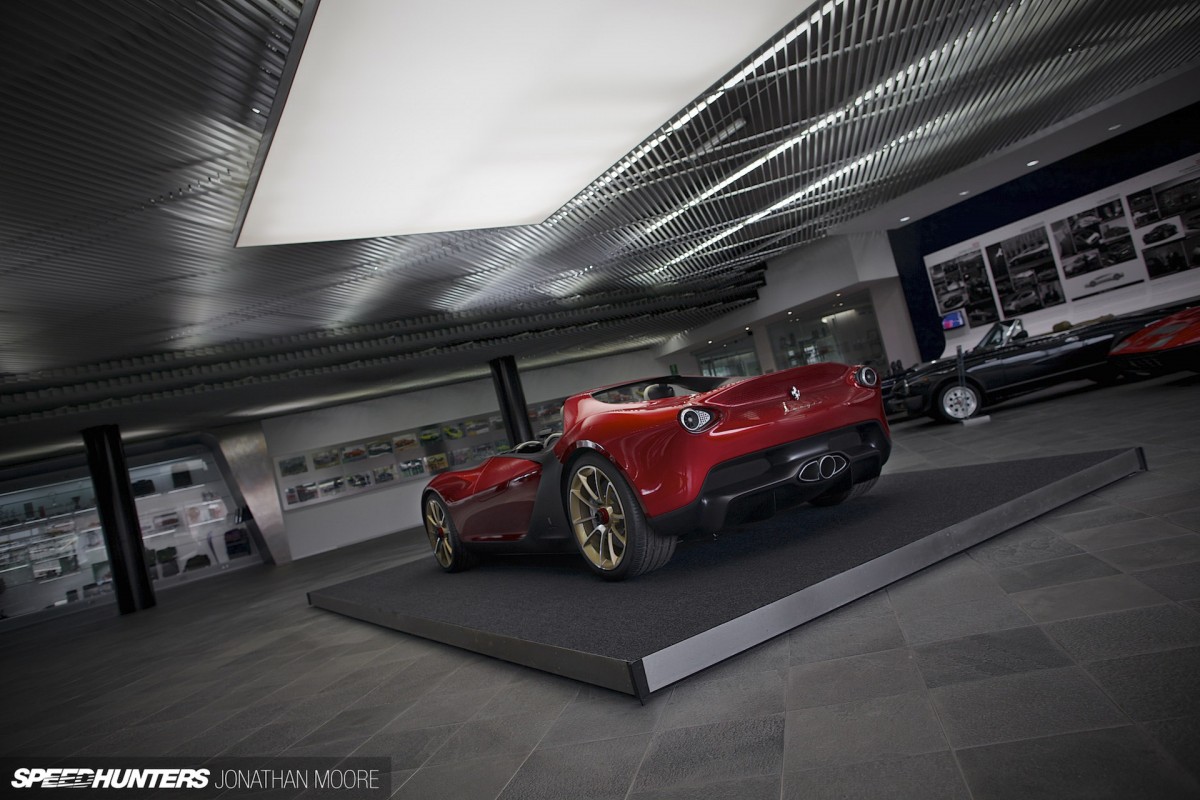
Then what do you know – the day we’re about to publish this story, and news is leaked that the green light has been given for a run of six Pininfarina Sergios: all pre-sold, of course. It must have been something we said!
Jonathan Moore
Instagram: speedhunters_jonathan
jonathan@speedhunters.com
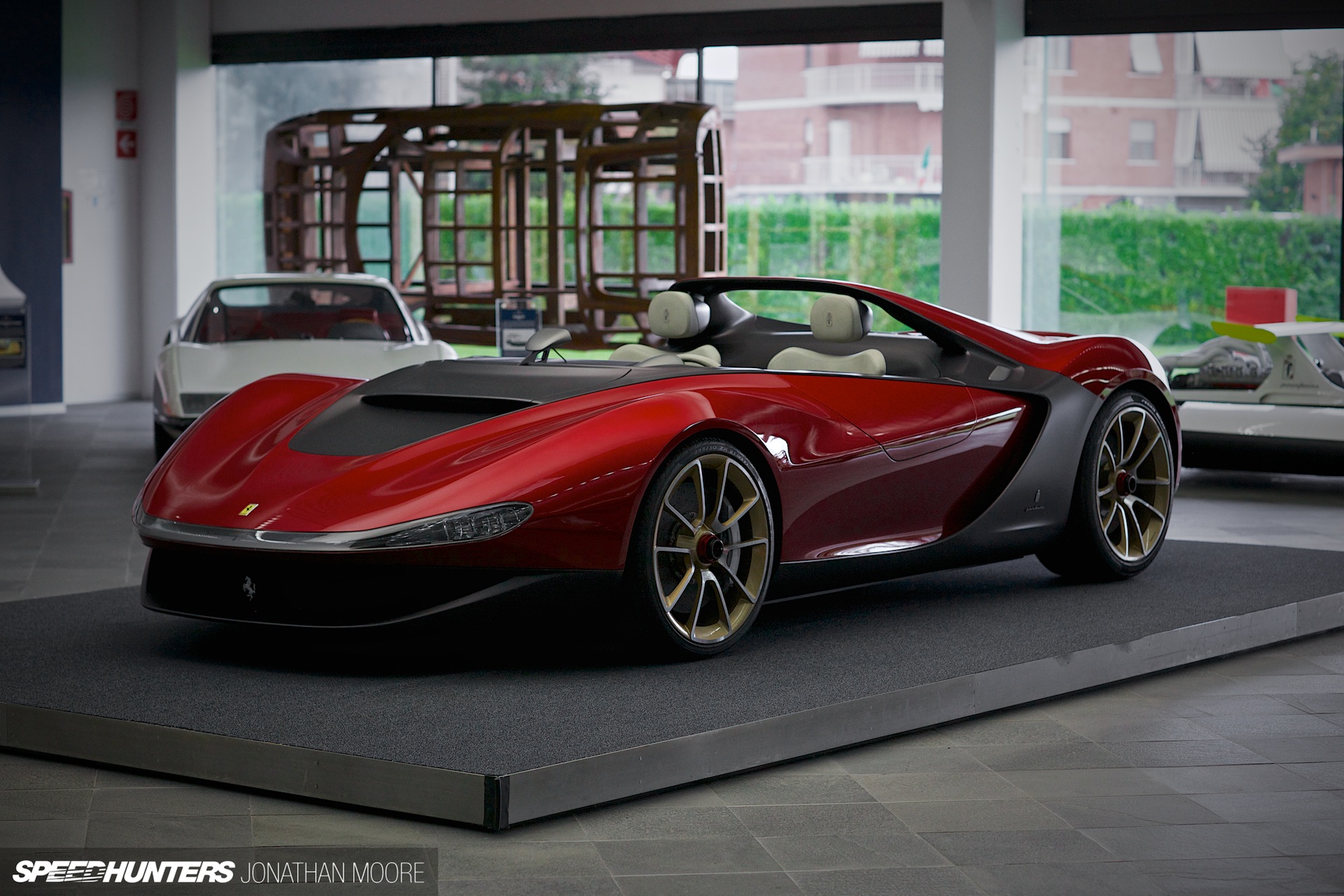
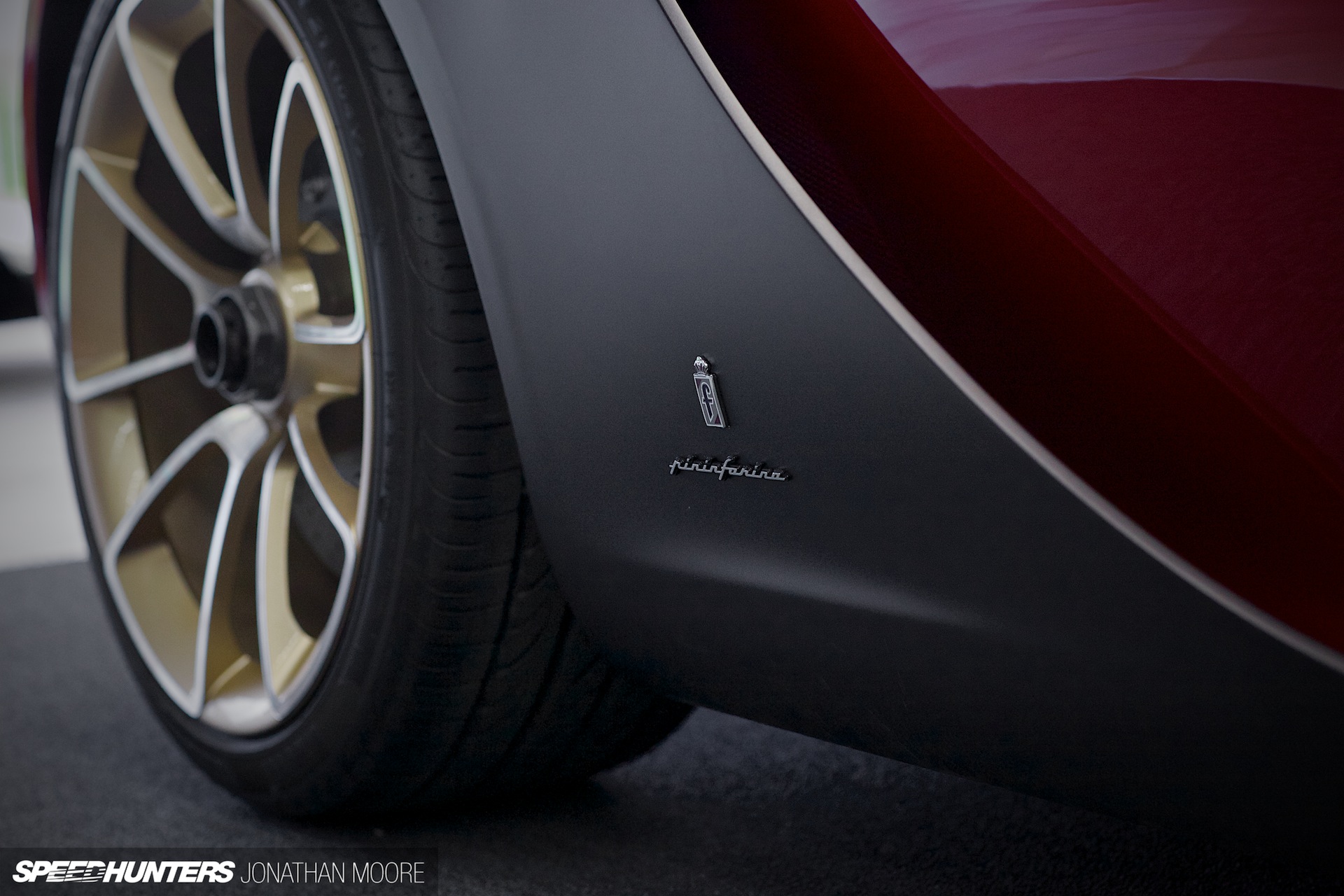












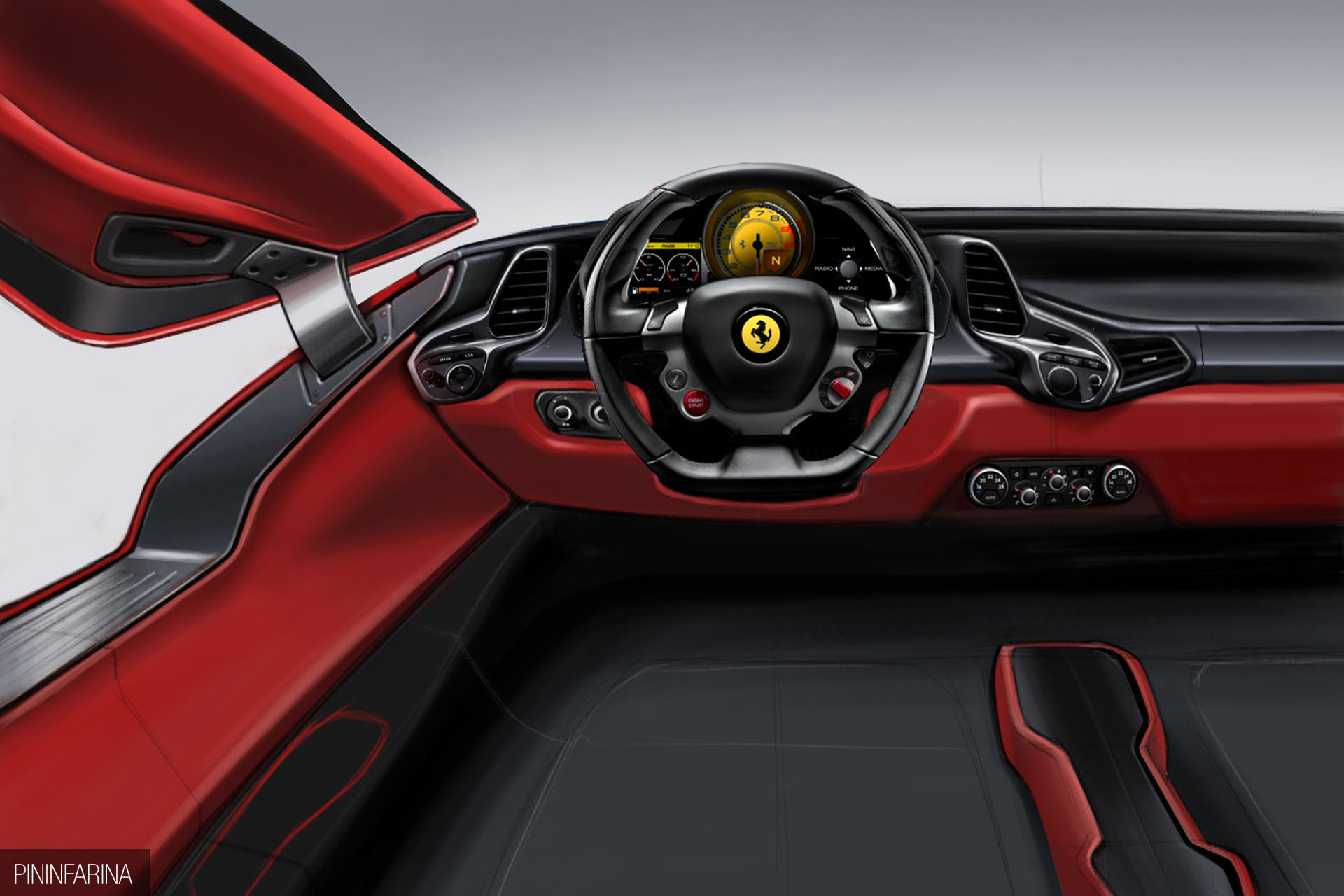





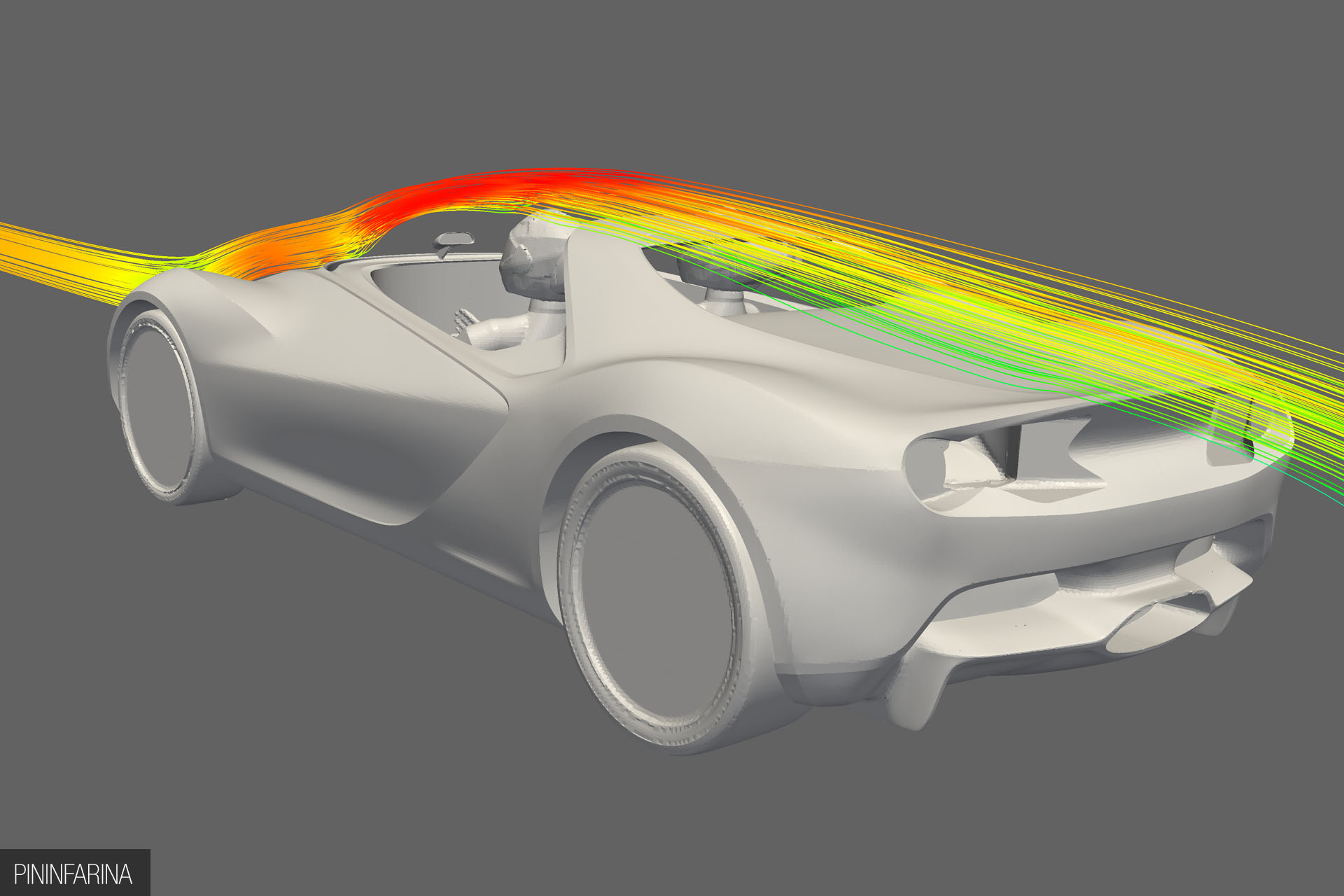




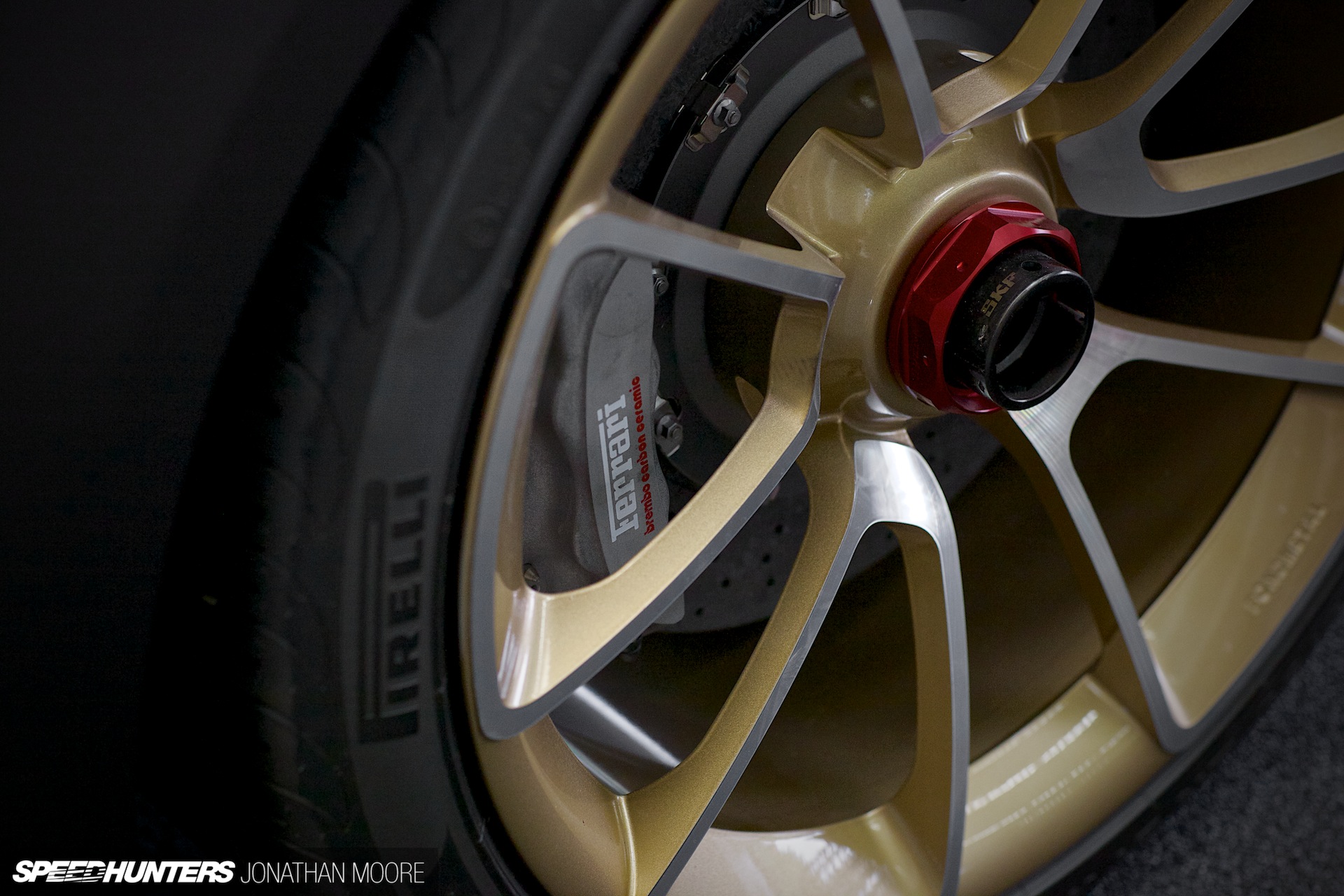

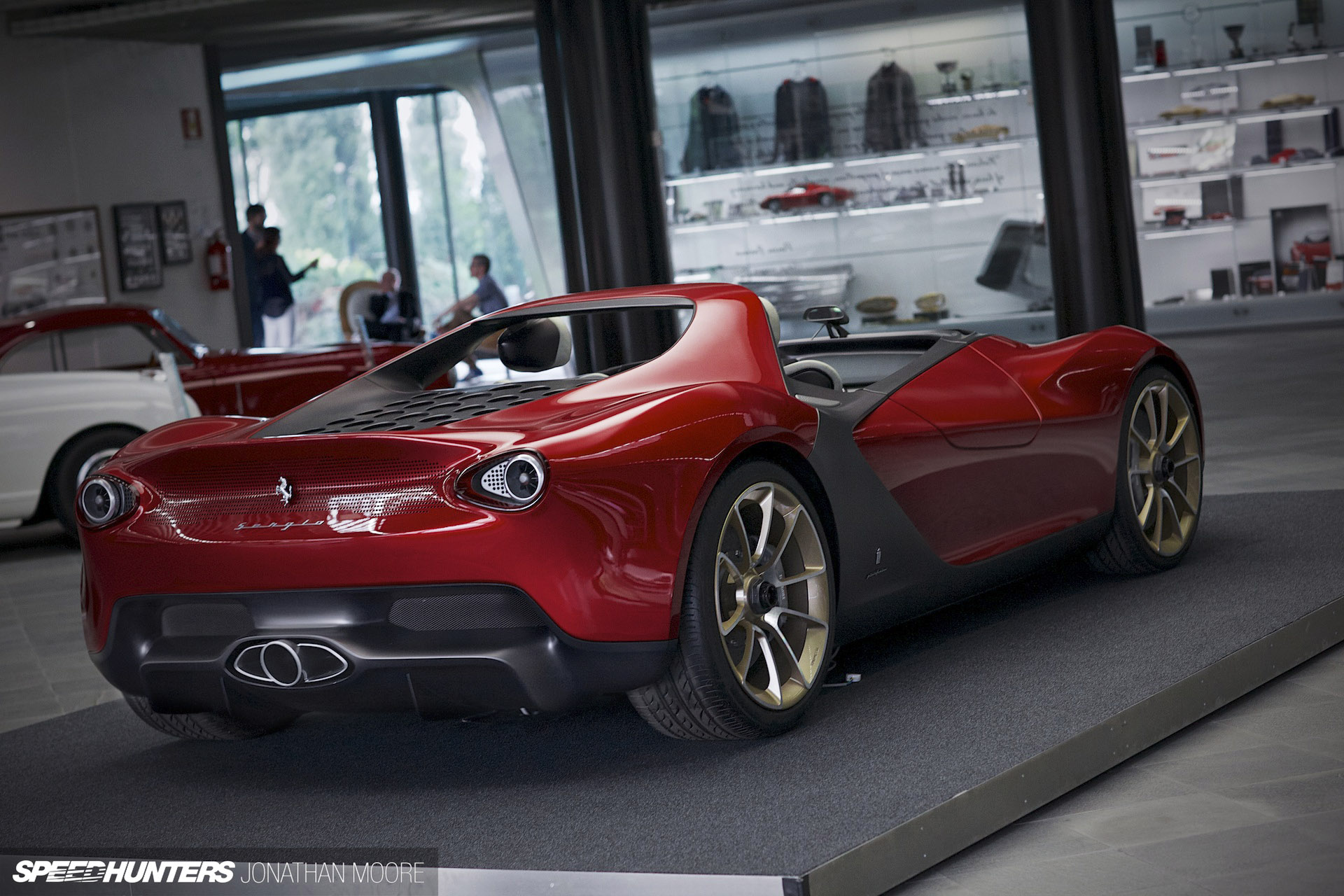

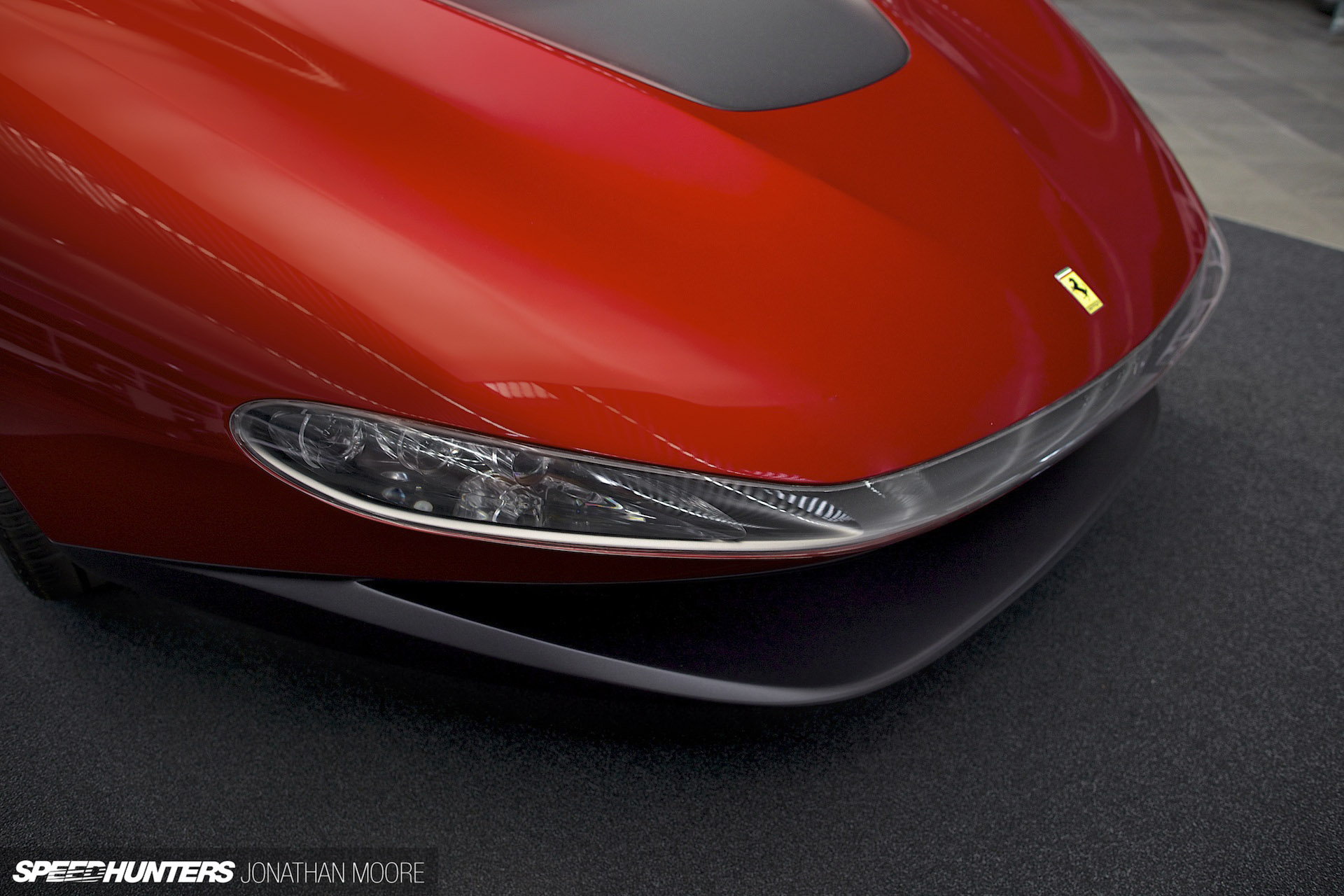


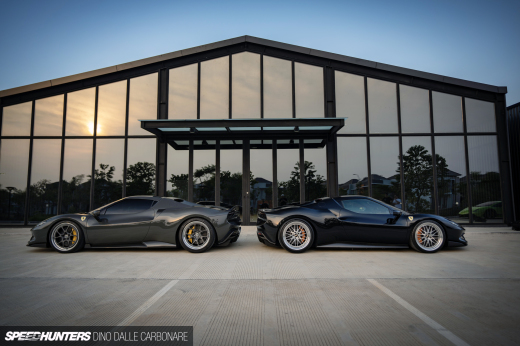






Wow so many details, the headrests are stunning. wonderful concept.
There exists a special moment in the ever flowing cascade of design -- it is the abstract moment when time decides to hover over a single curve, pouring purpose and meaning over it. That's how design becomes art. It seems like the Sergio is trapped forever in that very instance.
I guess were already on the vacuum campaign. Tbh, I love the look of the car, but don't find it suitable as a tribute to the legend. The proportions look off from the side to me. For comparison when I look at the F40's side profile everything looks just right. Nice car, but it doesn't hit the mark in capturing an icon.
Maybe it never will because it's not designed by the man himself, just looks off to me. It comes off as a bit like taking into account all 12 designers ideas to not offend any one of them instead of clearly saying "this is the one, we're doing this."
Personally I see a lack of leadership in this design, theres too much simplicity without enough boldness, and the boldness it does have is understated and convoluted. Very odd design IMO. I like it as a vehicle because it's different, but as a design piece it's bland. Sorry, totally misses the mark for me.
Thank you for taking us behind the scenes. I continue to be blown away with Speedhunters inside access. Nice storytelling too!! Can't wait for more!!
Hopefully this is the stuff that all the profit gained from FF's and California's goes towards.
These concepts come and then vanish - so great to see Speedhunters bring them back into the spotlight. Cool.
veecee8 Indeed they can: I'm looking forward to writing up my story on Pininfarina's museum, where it was clear just how many incredible machines they've been involved with over the years. I'm so pleased that the Sergio will now move from concept to production.
@SS6K Well, that relationship with Ferrari definitely works on a number of levels... But it's mutual benefit: Ferrari wouldn't be looking to an external company without good reason, especially with such a strong internal design team, but they see it as beneficial to the brand to have that almost competitive dynamic.
@Paninfanthusiast Design is subjective, so no need to apologise!